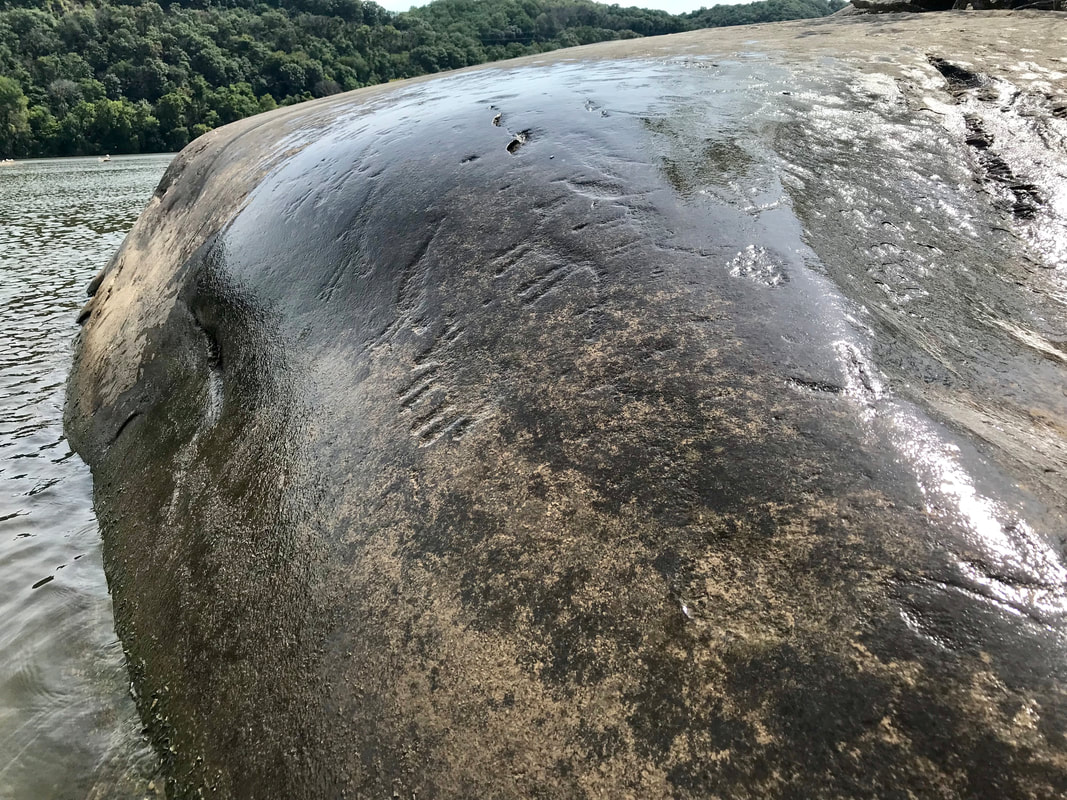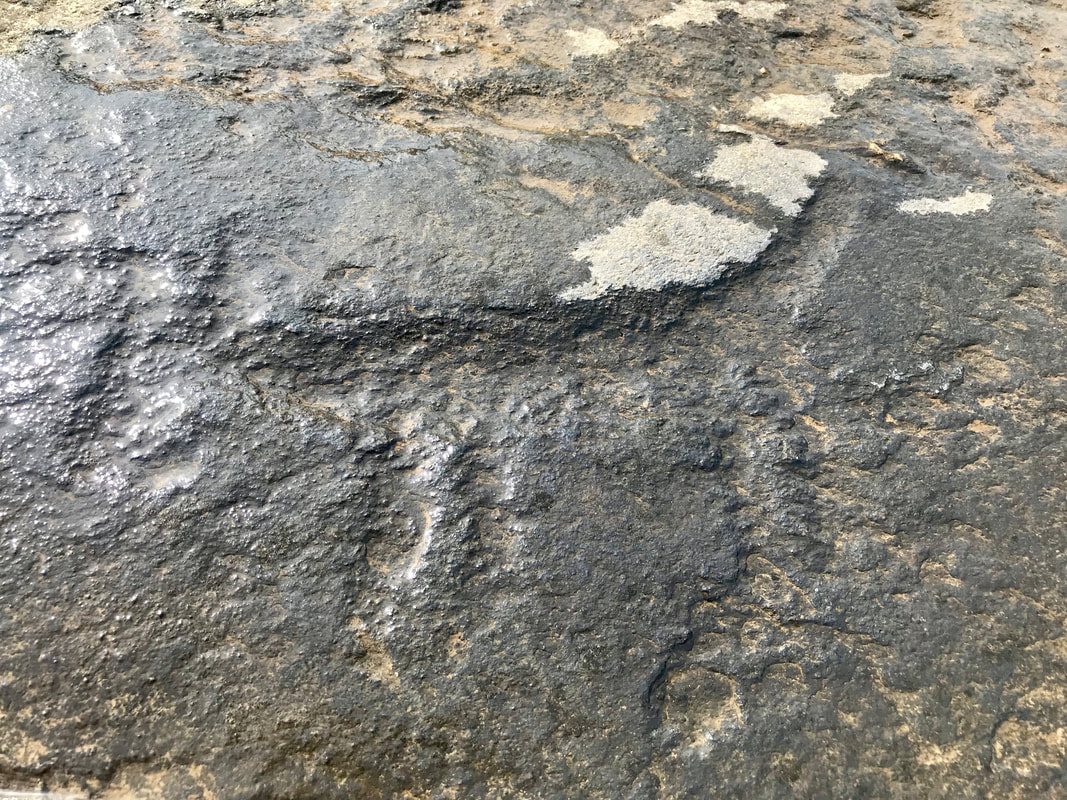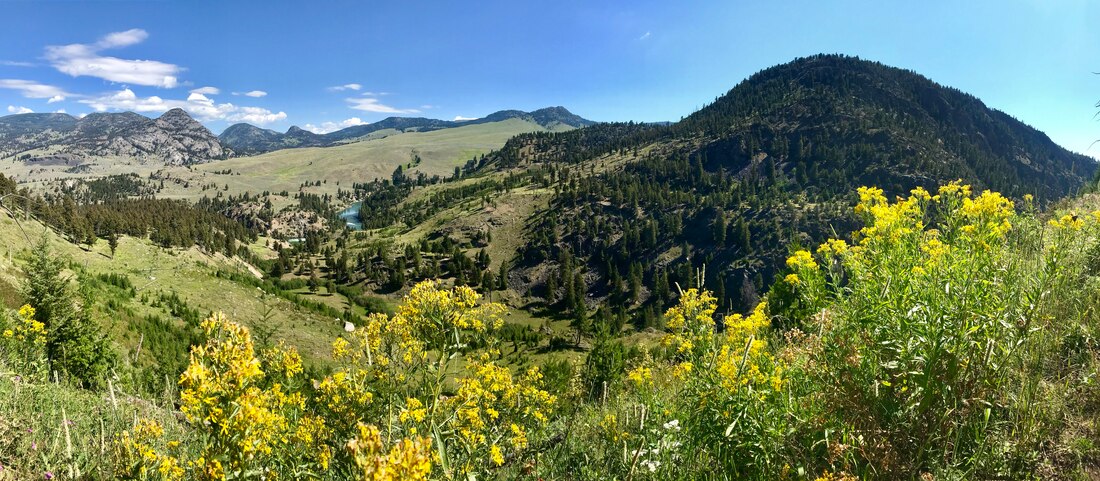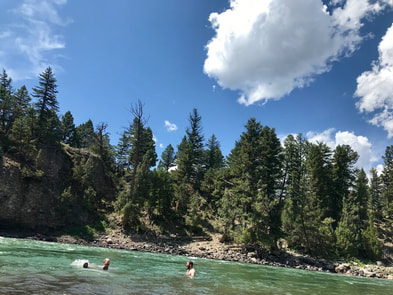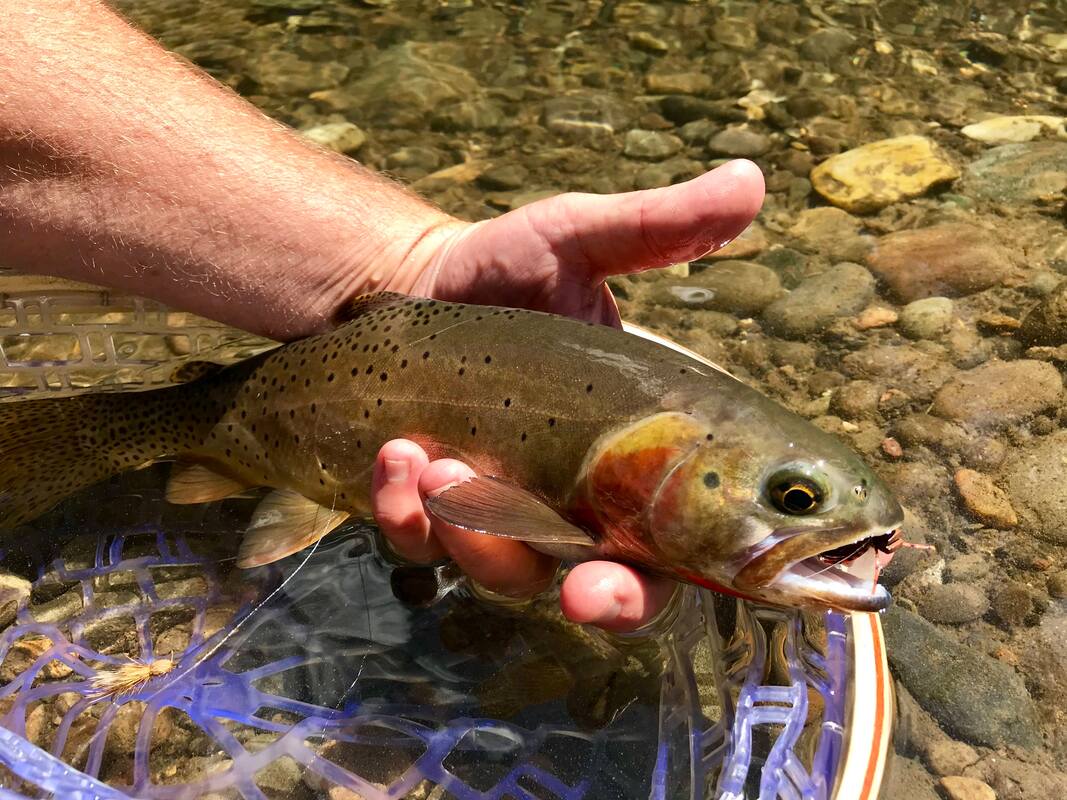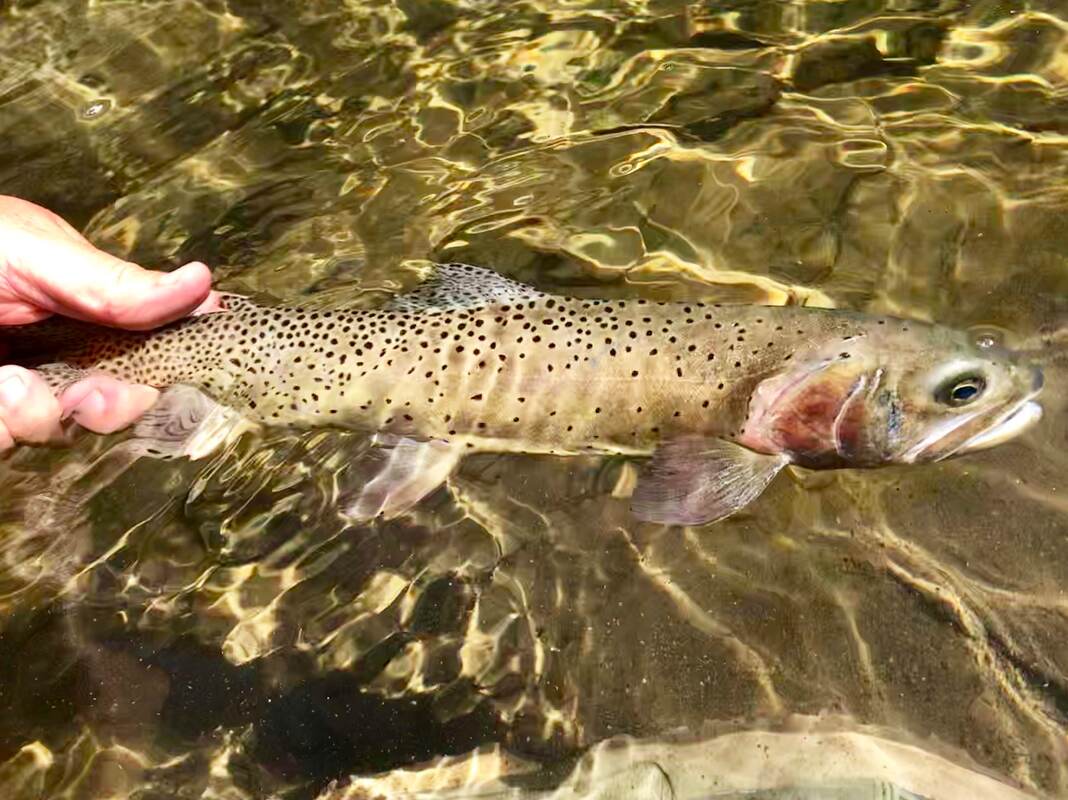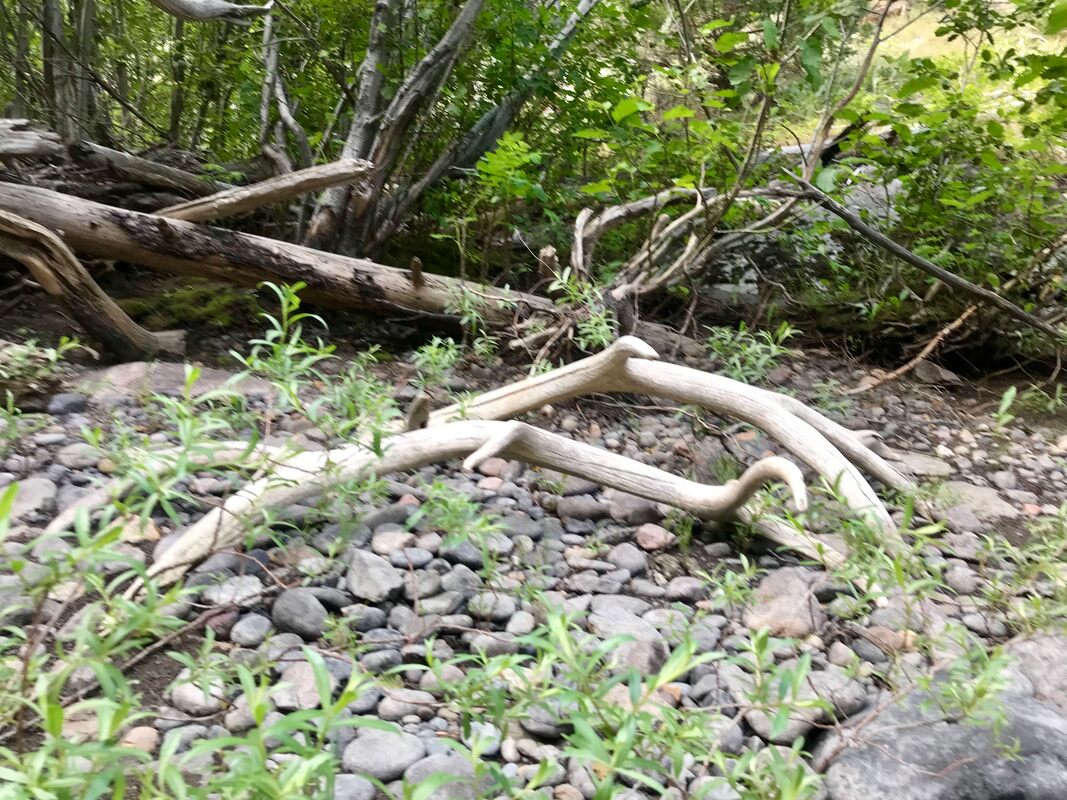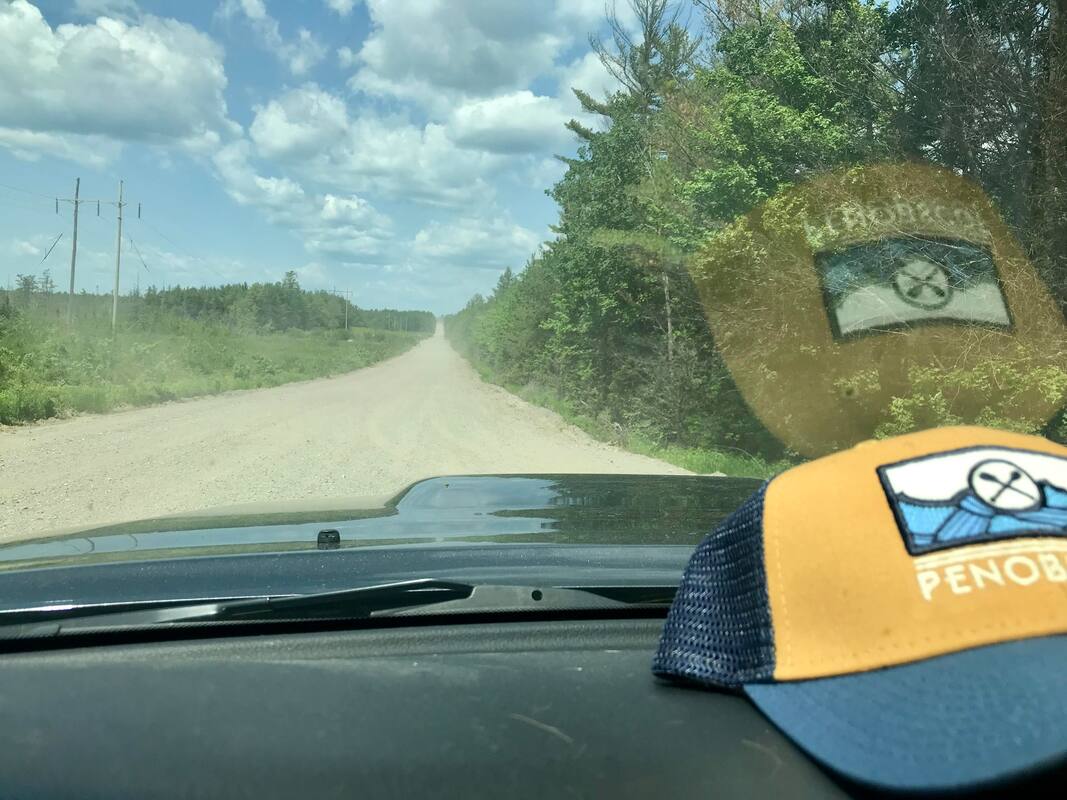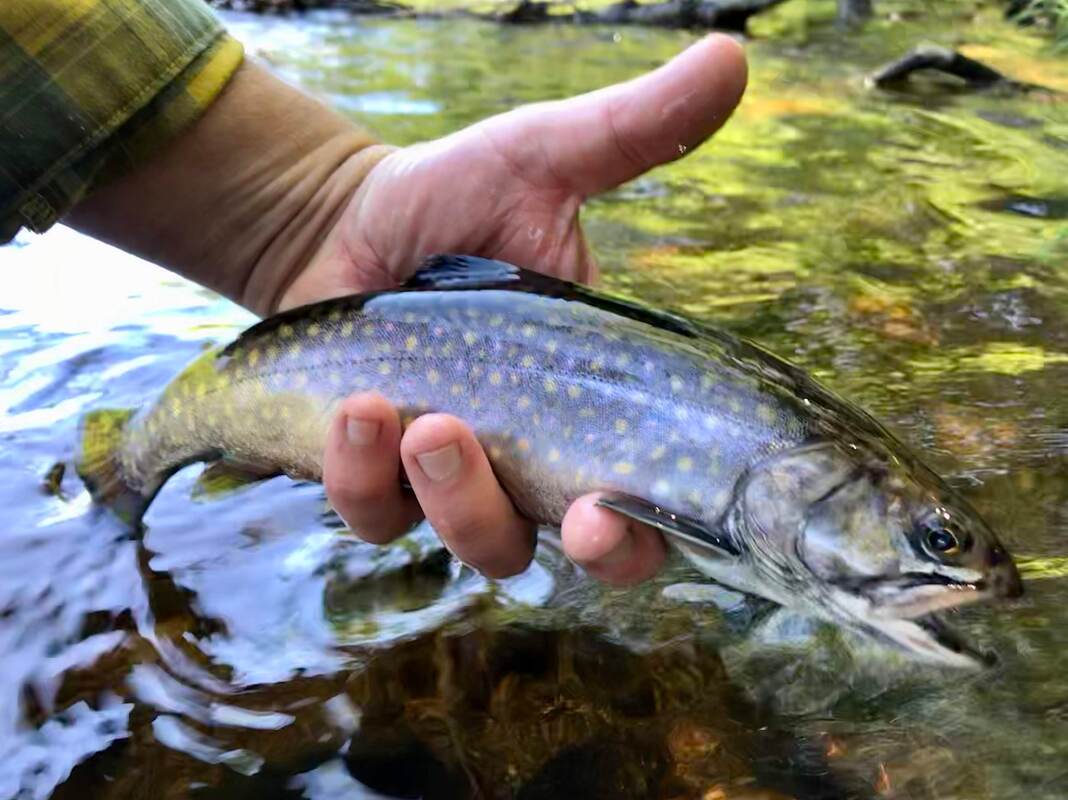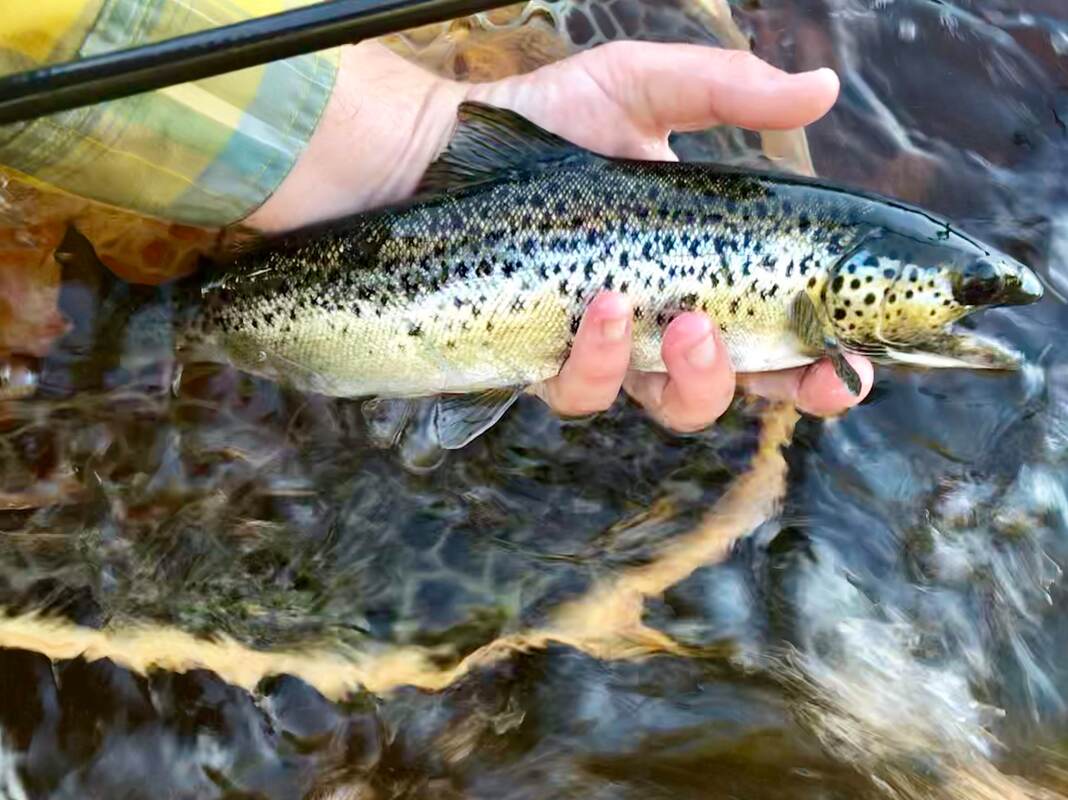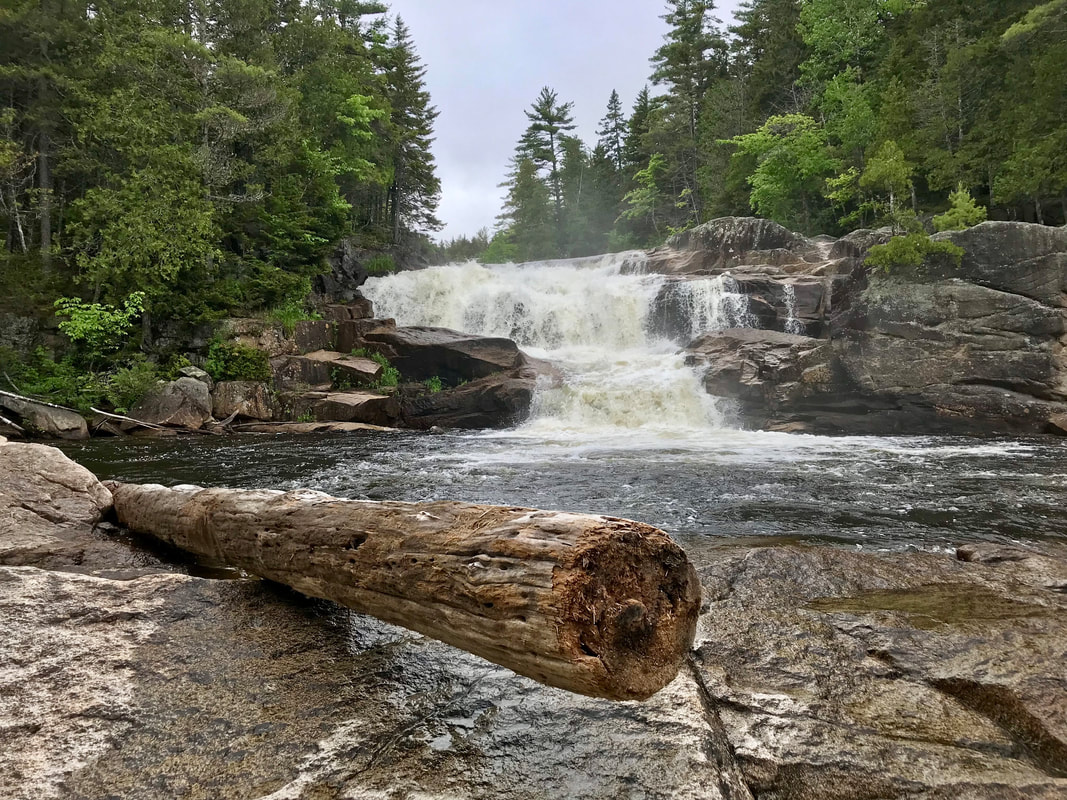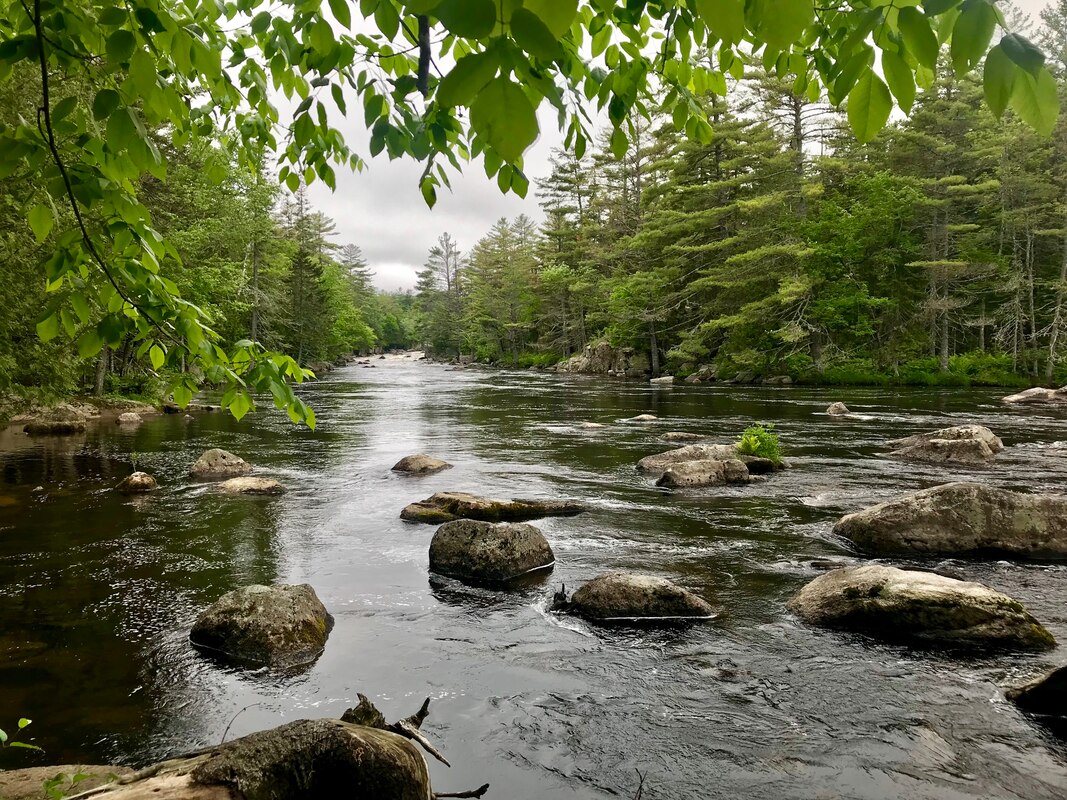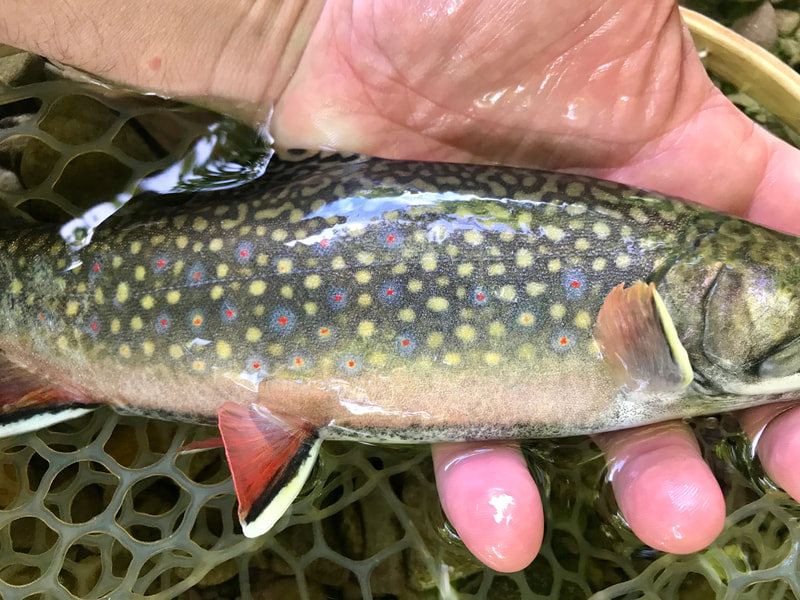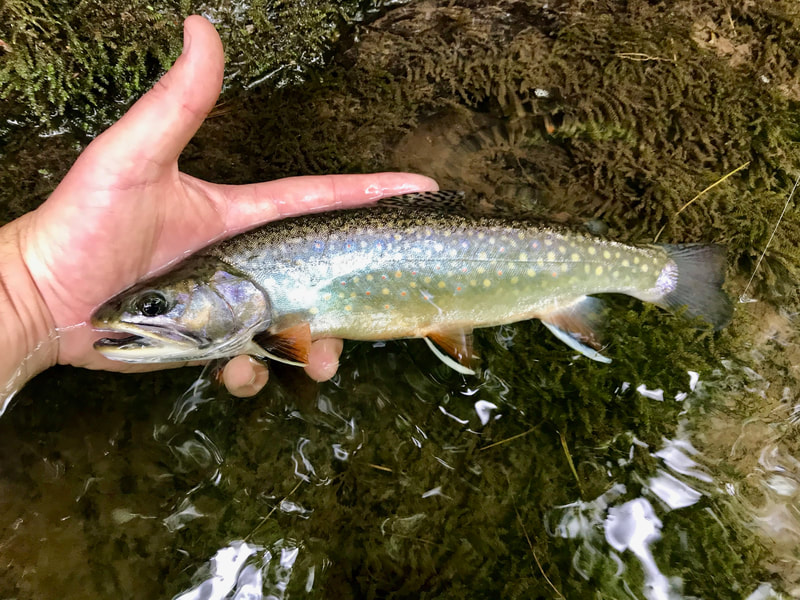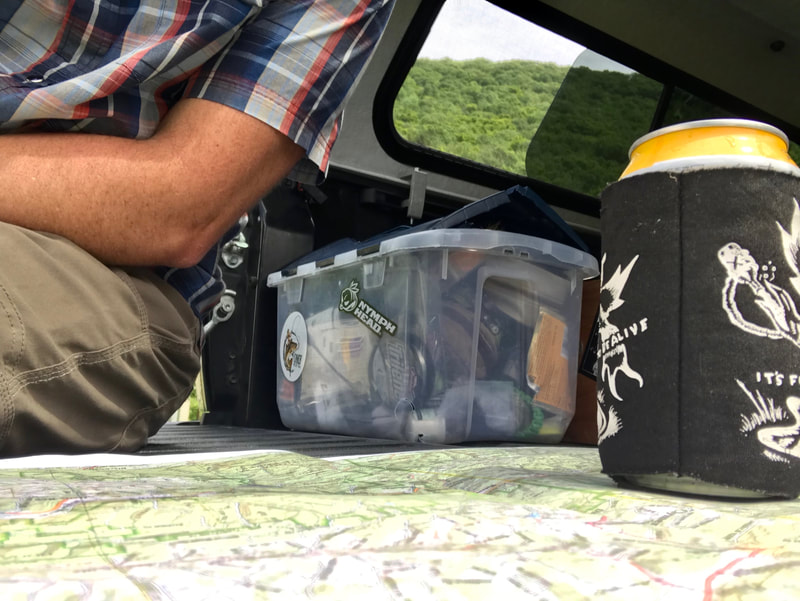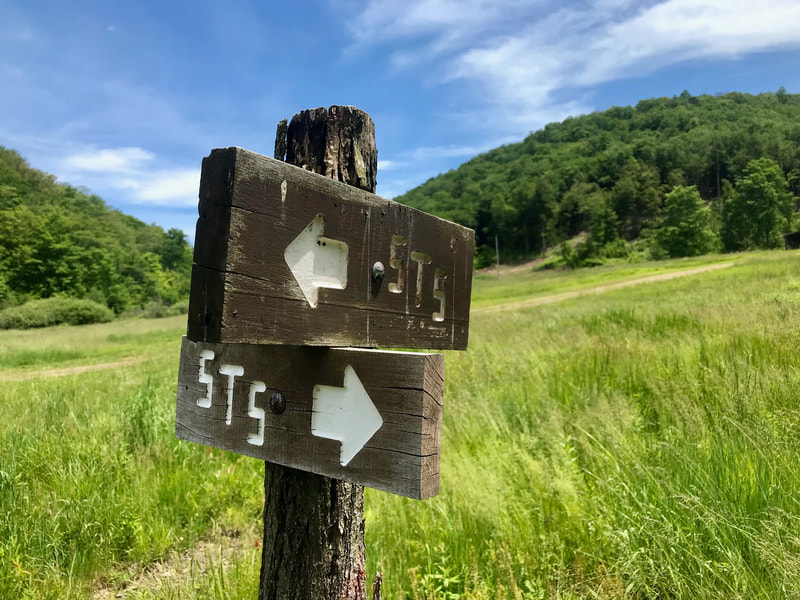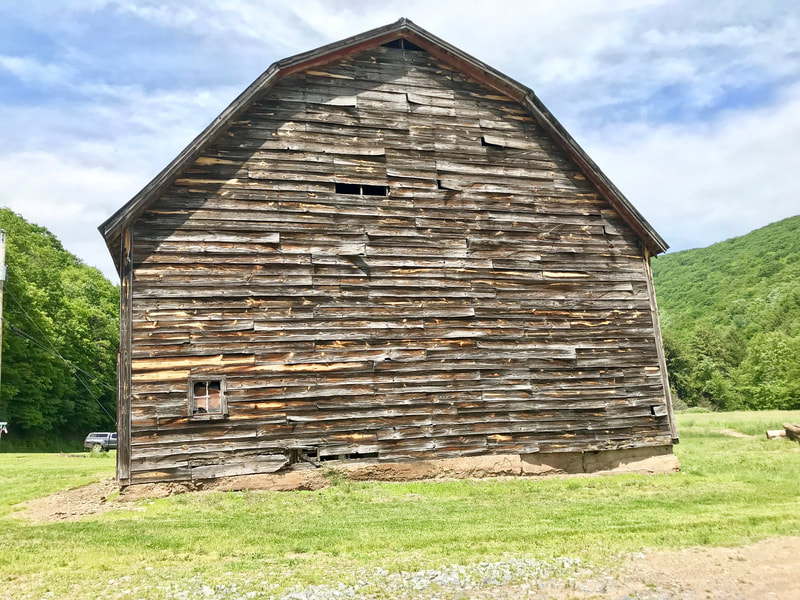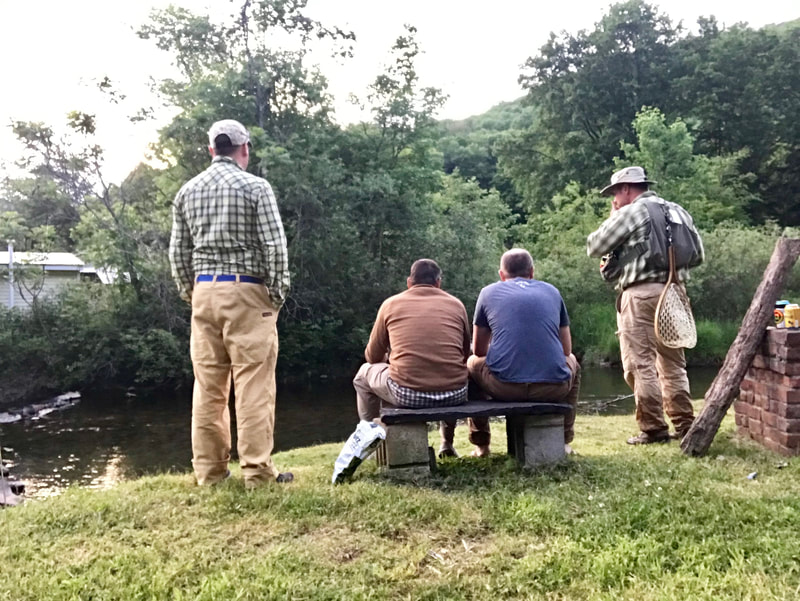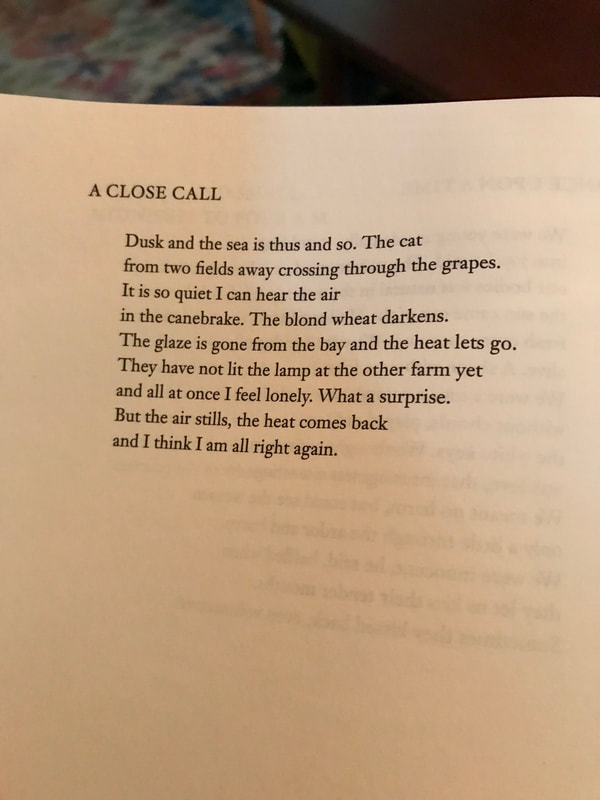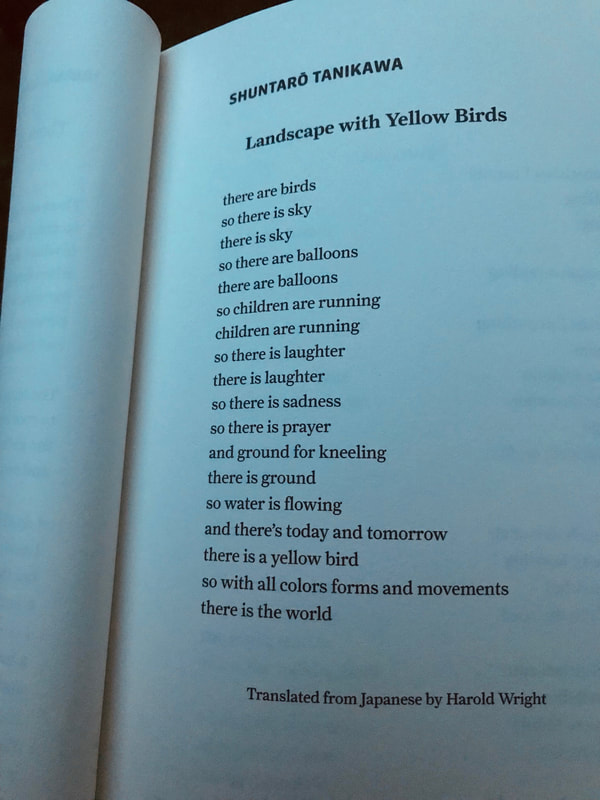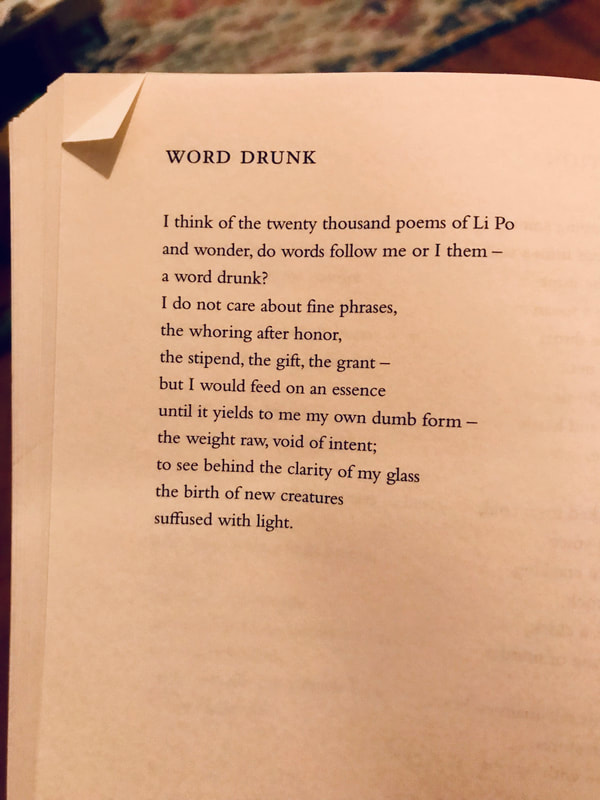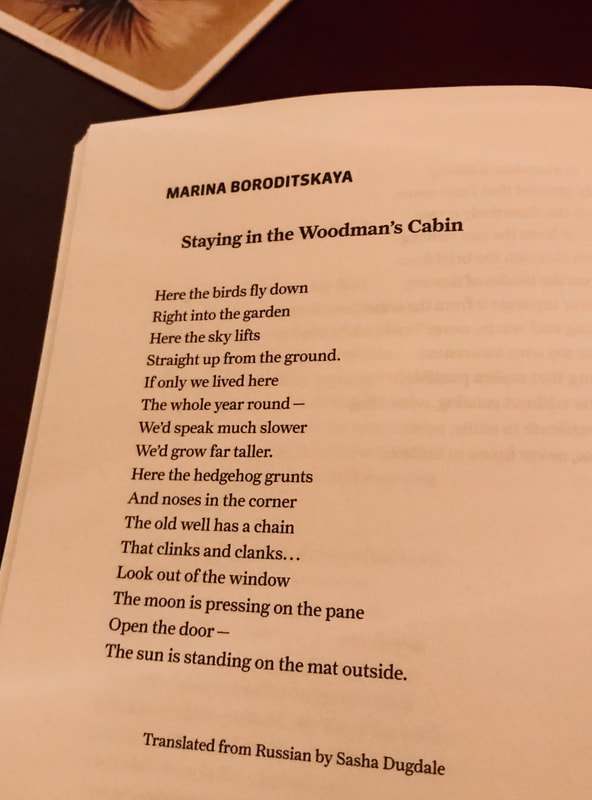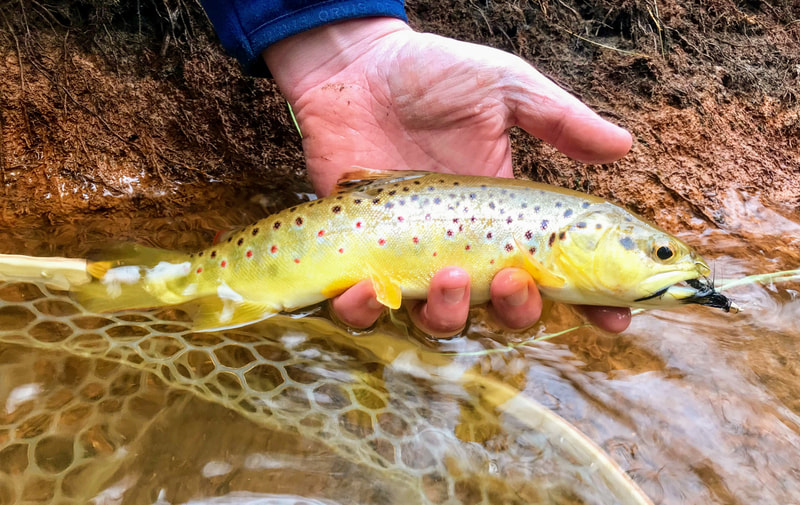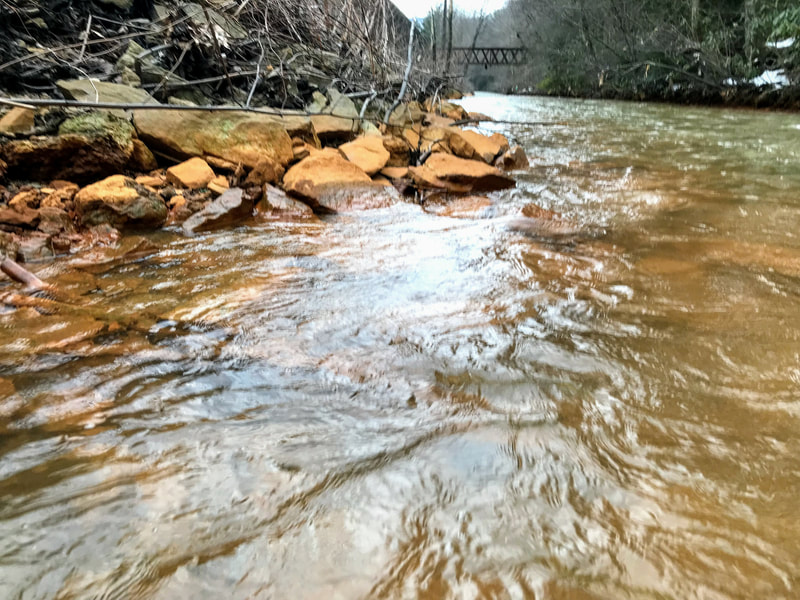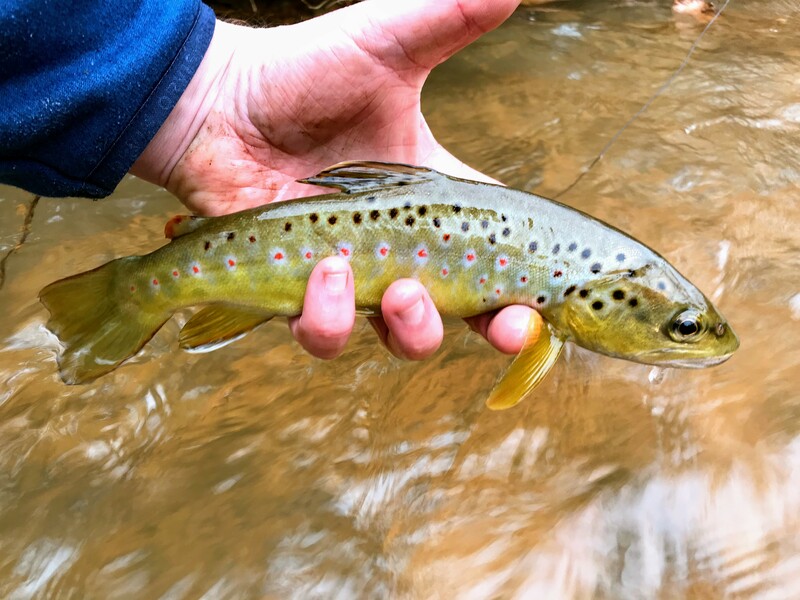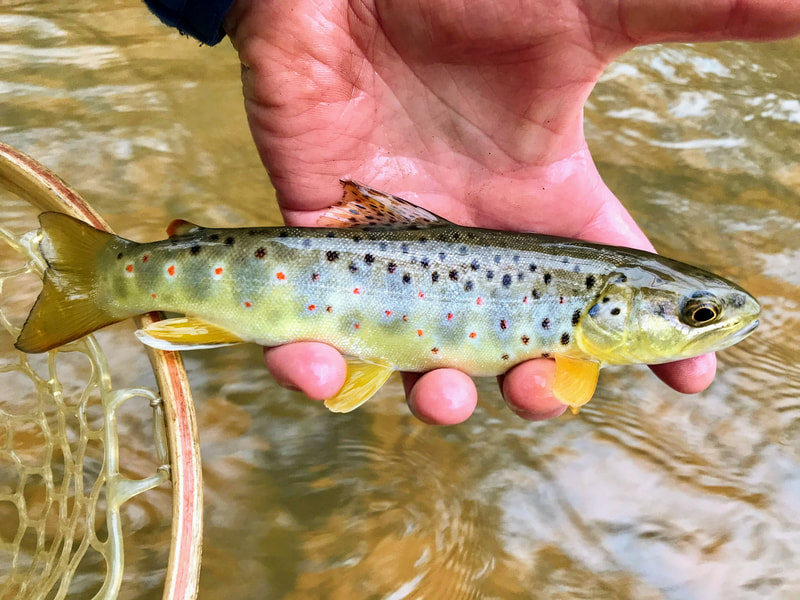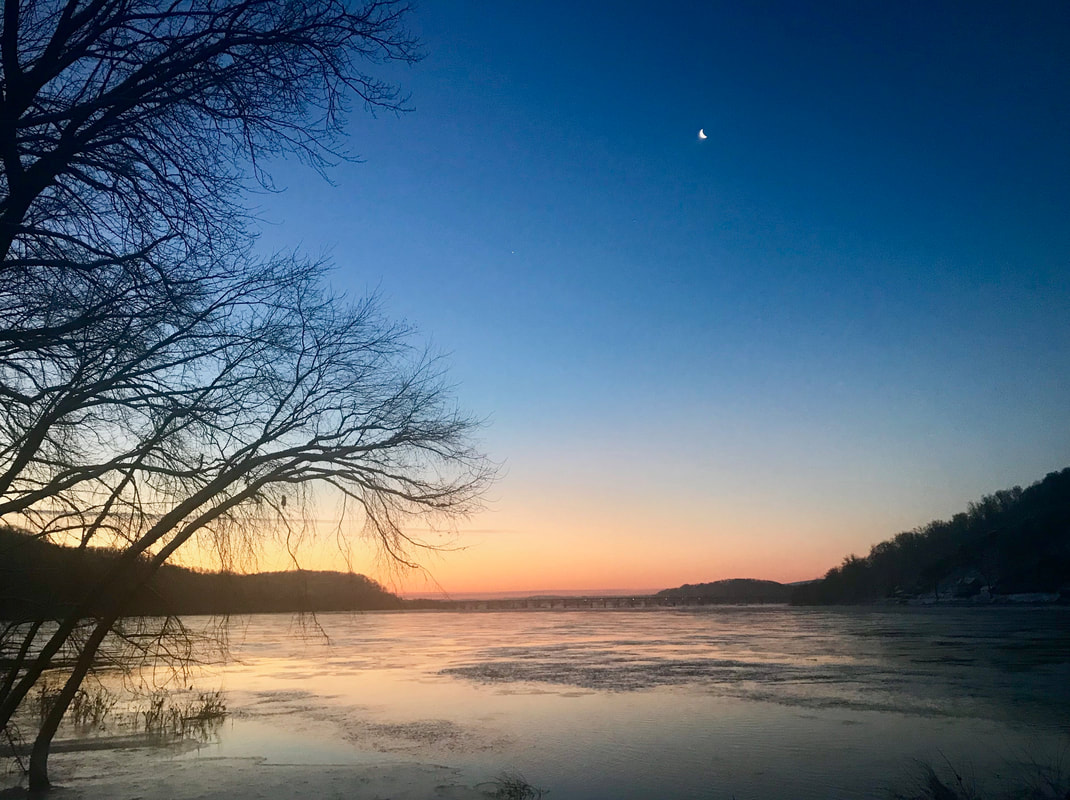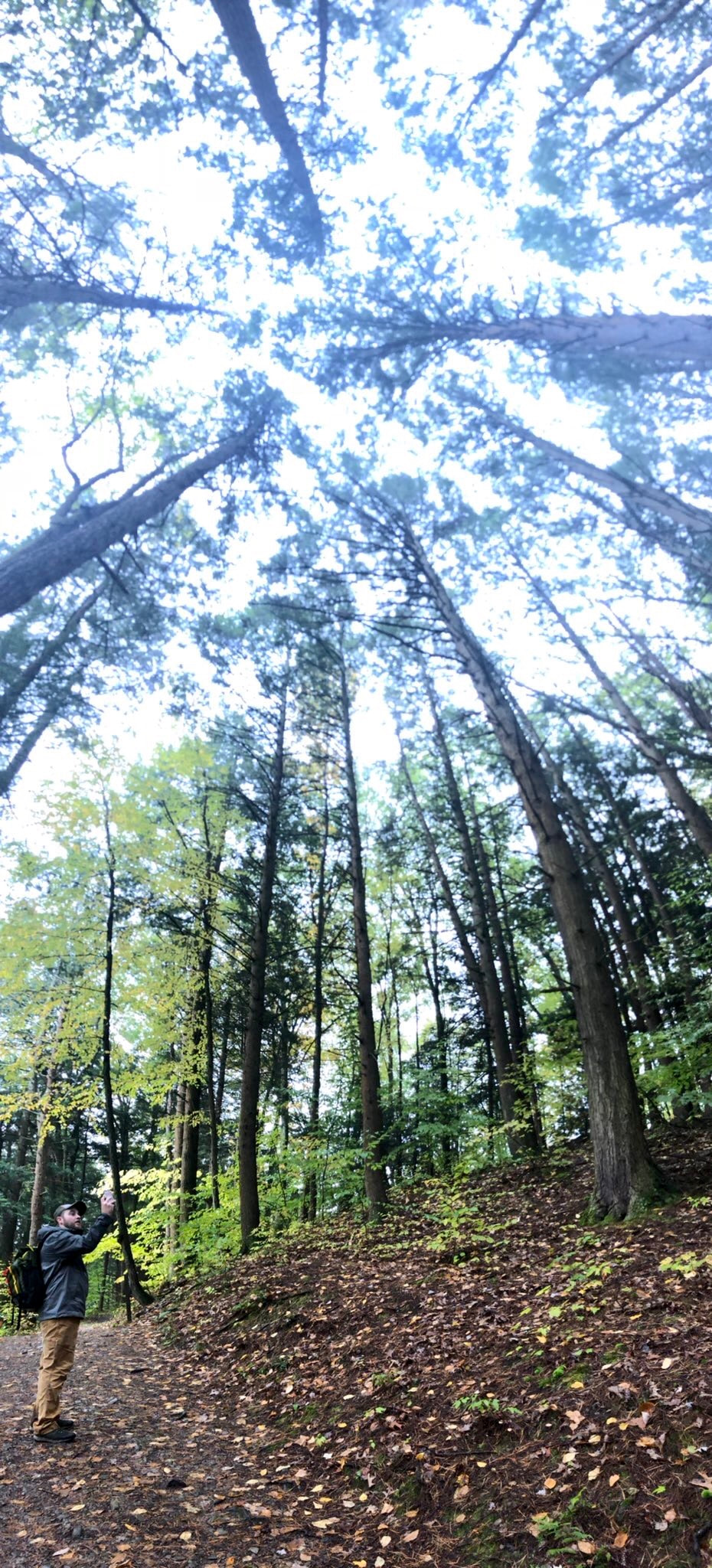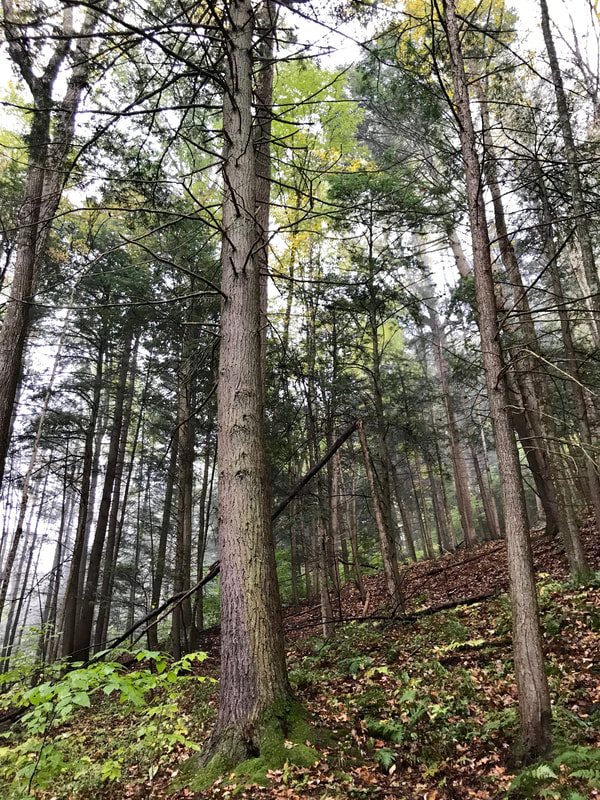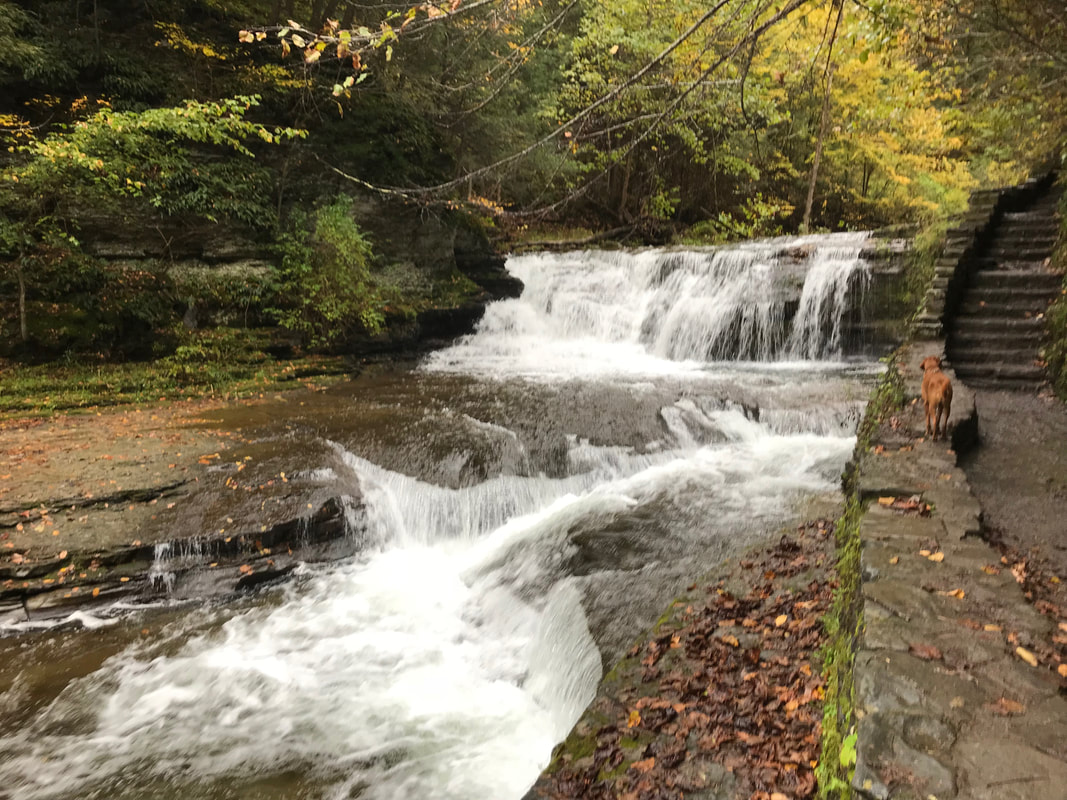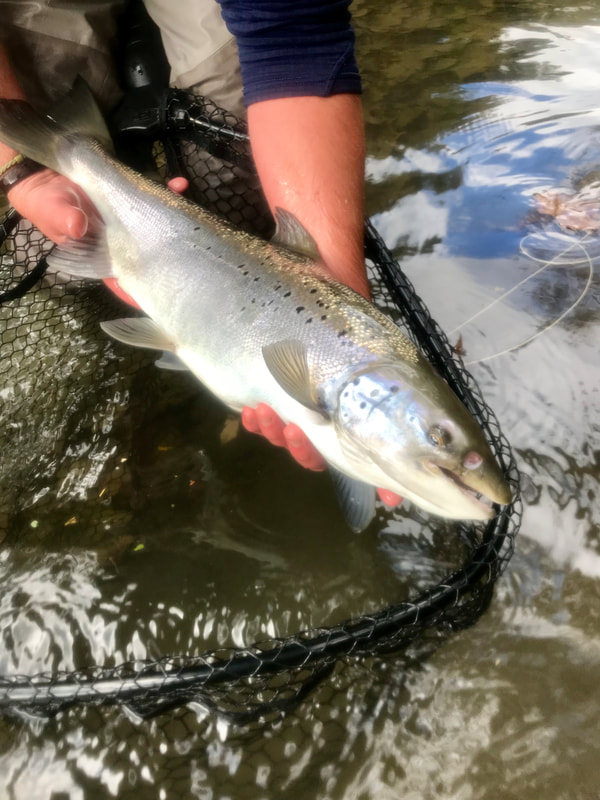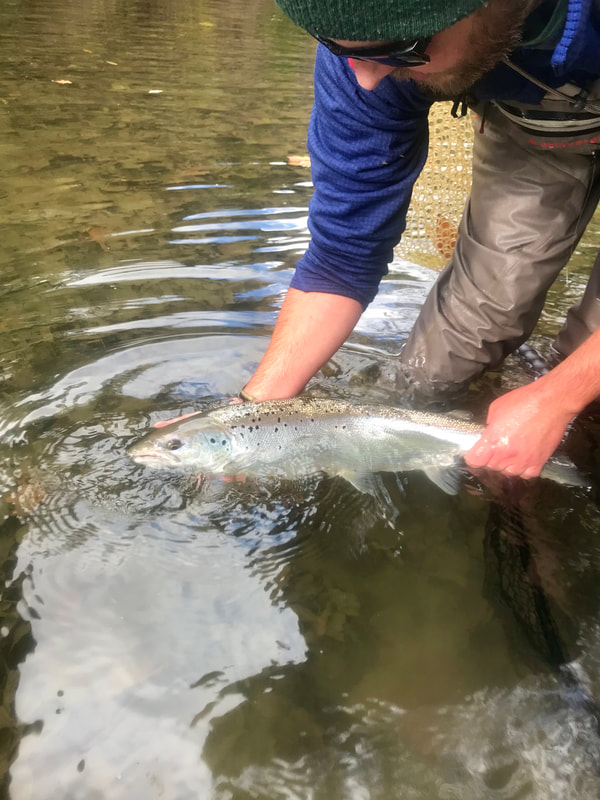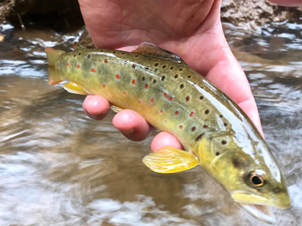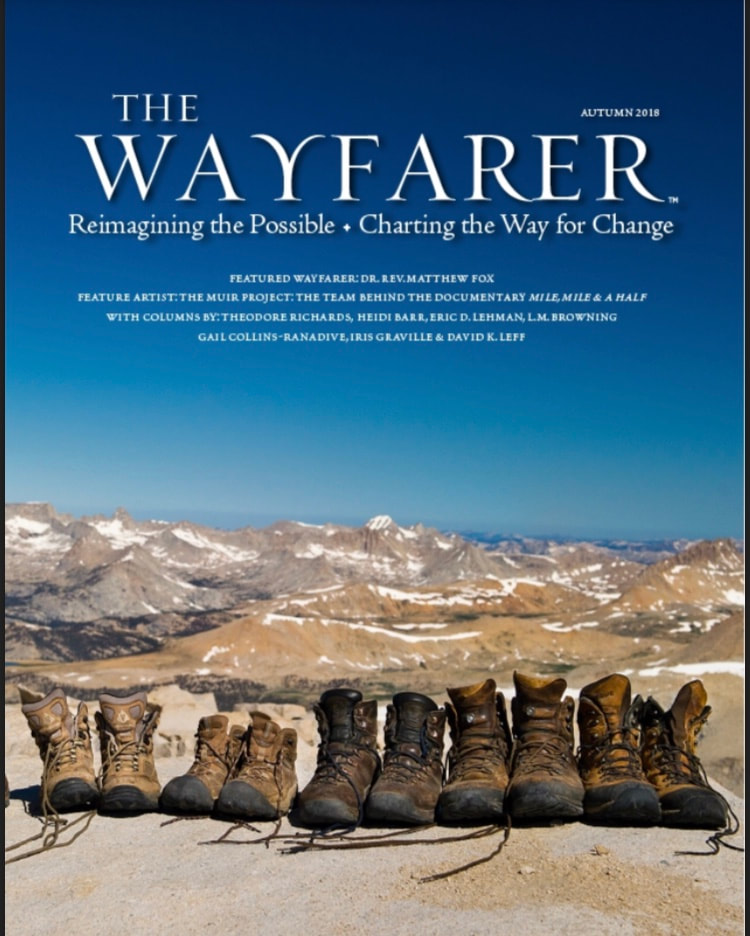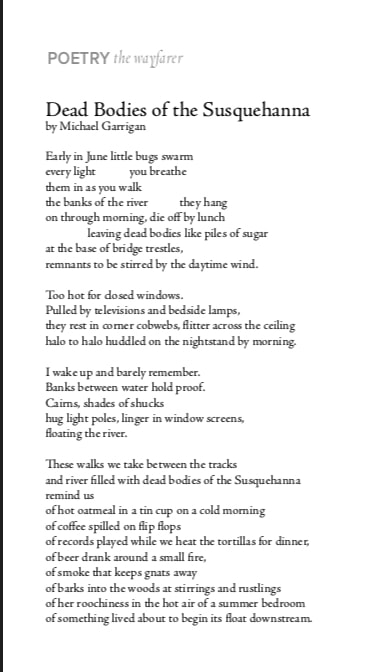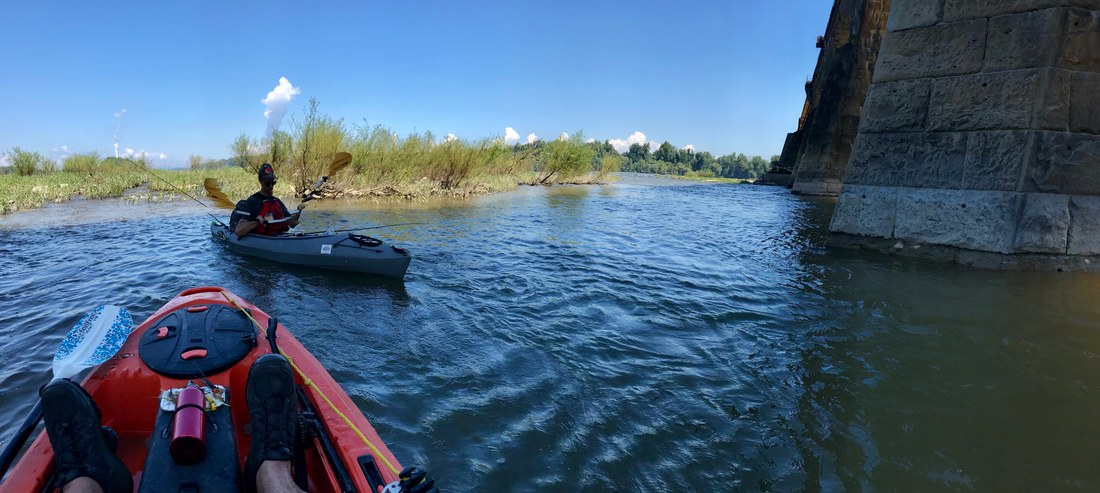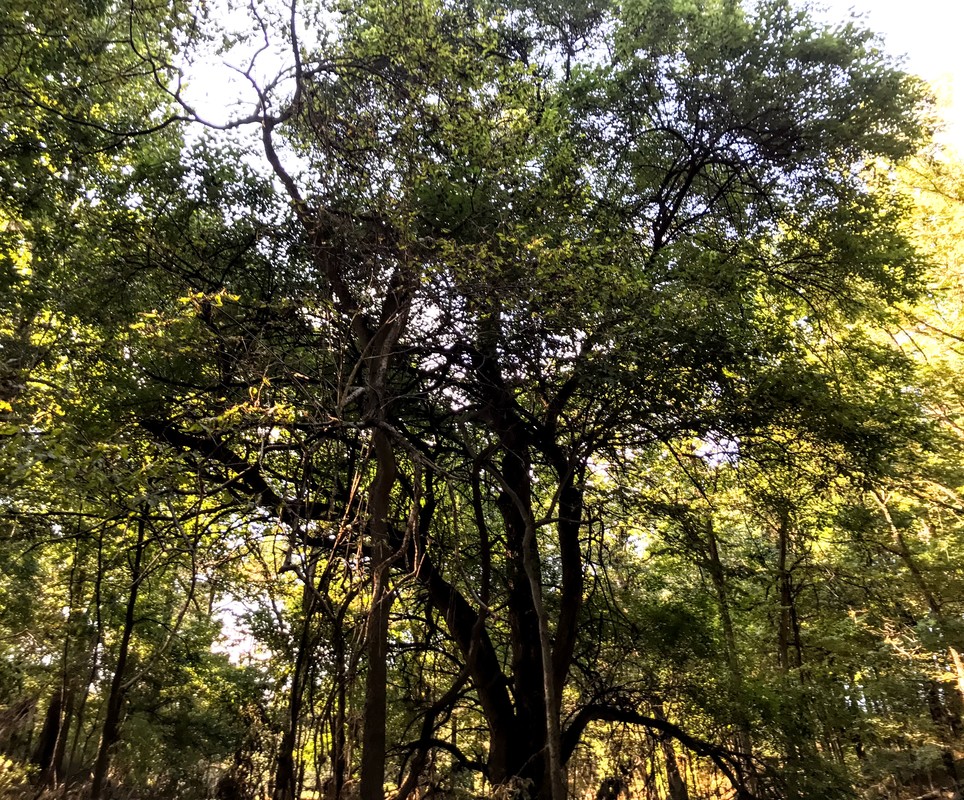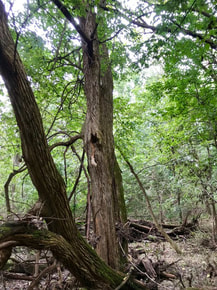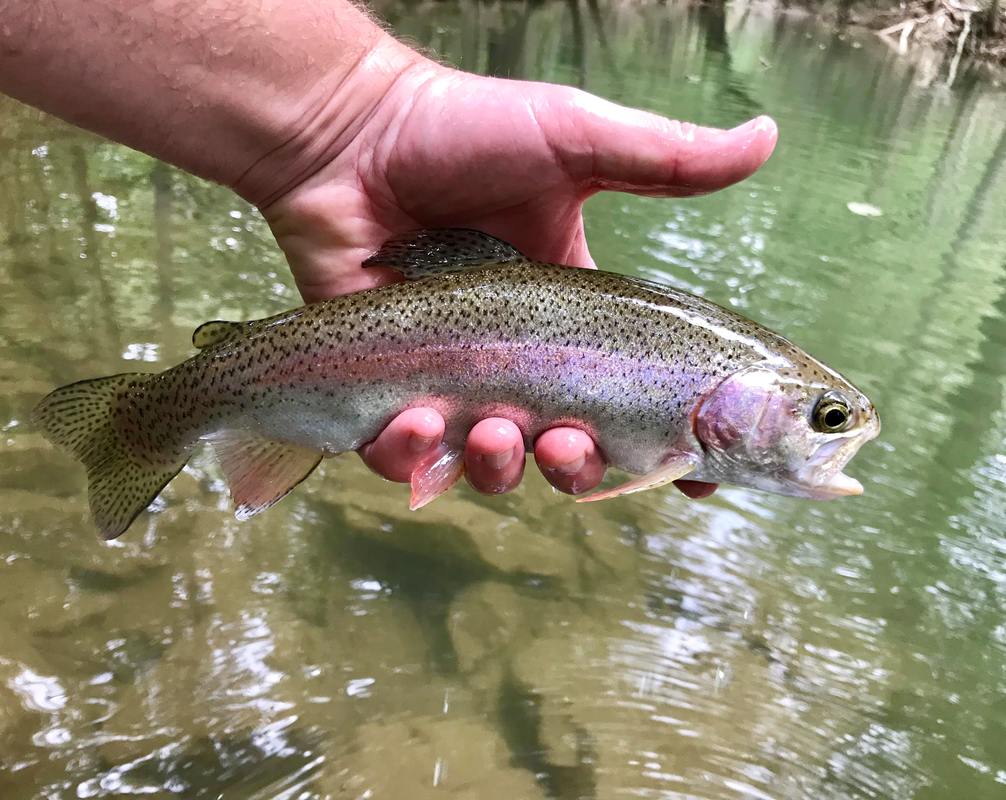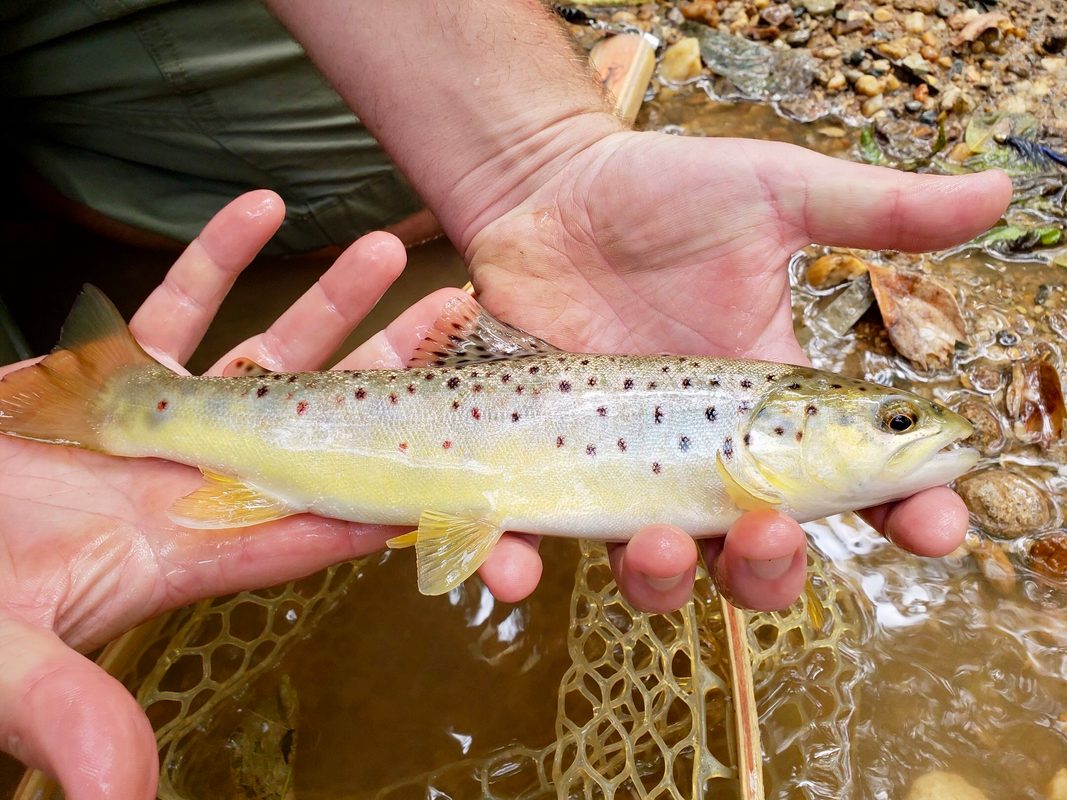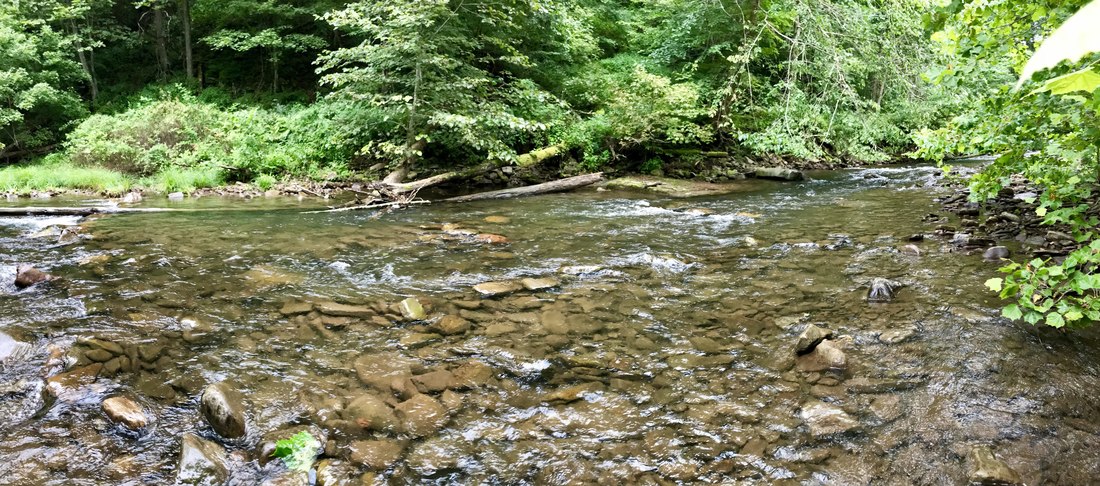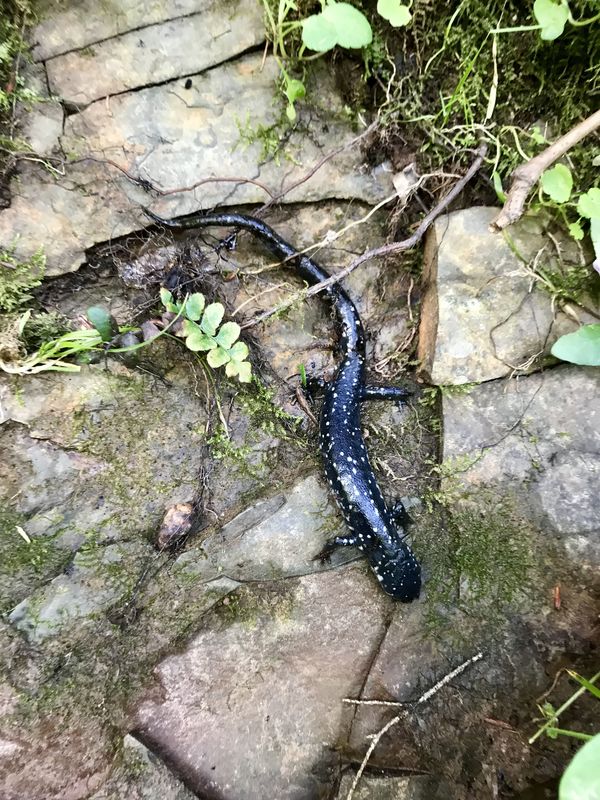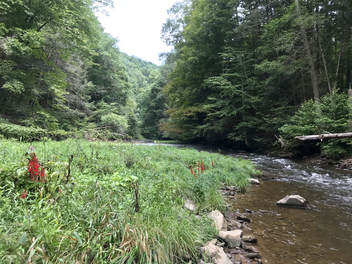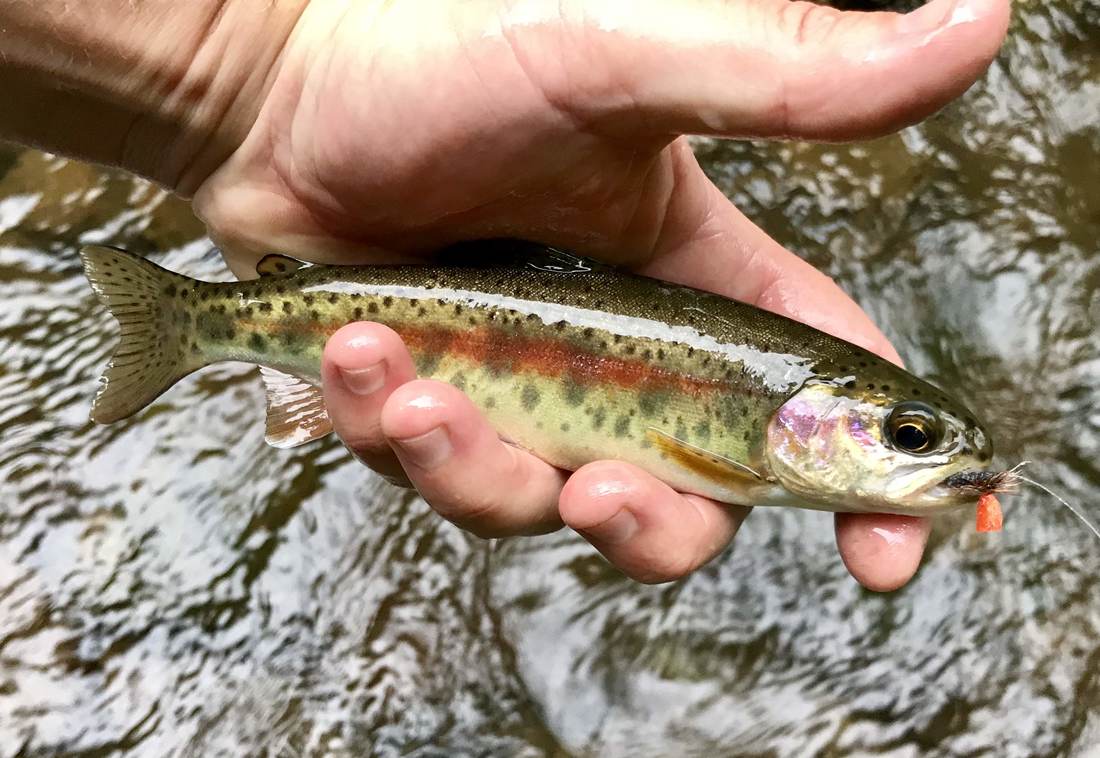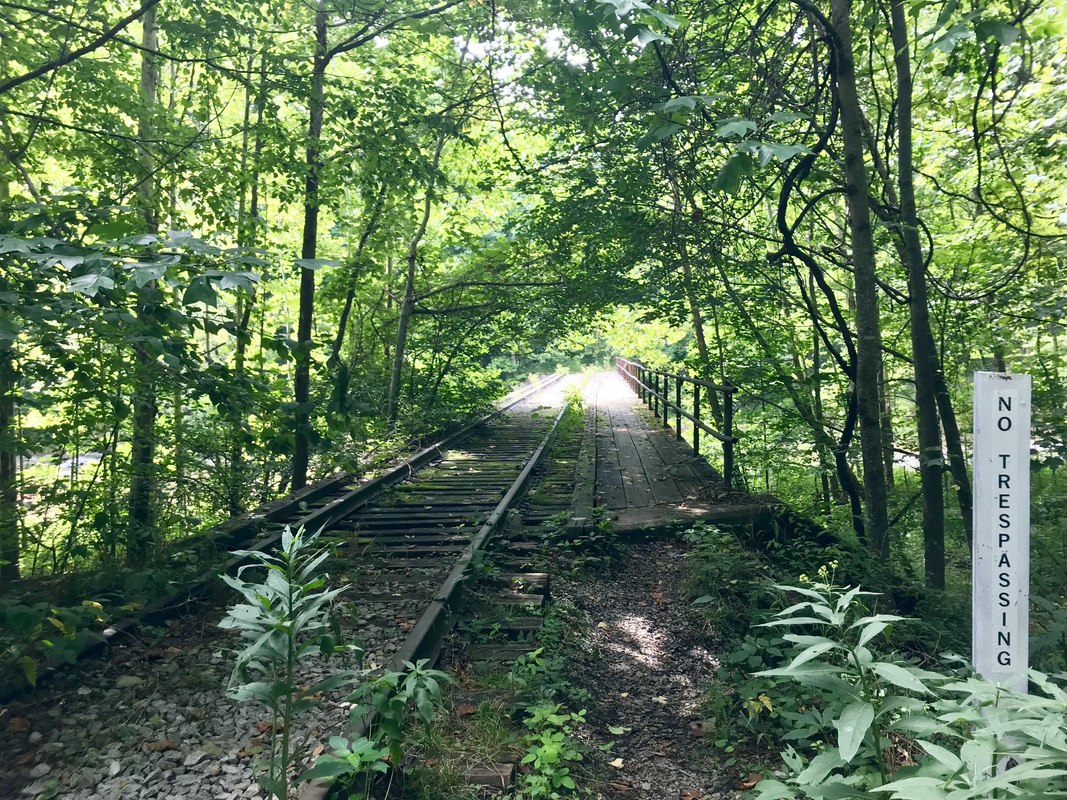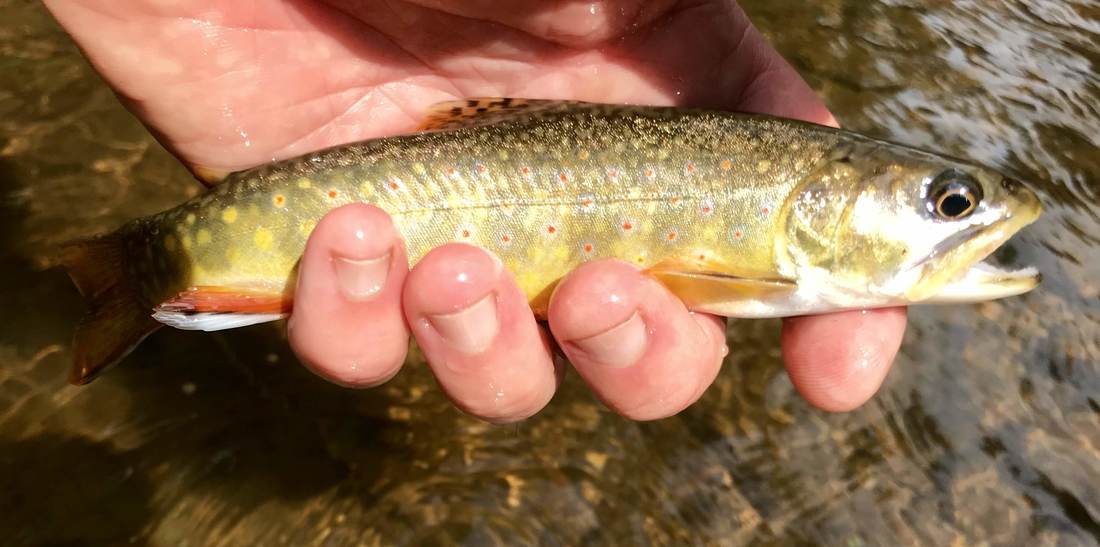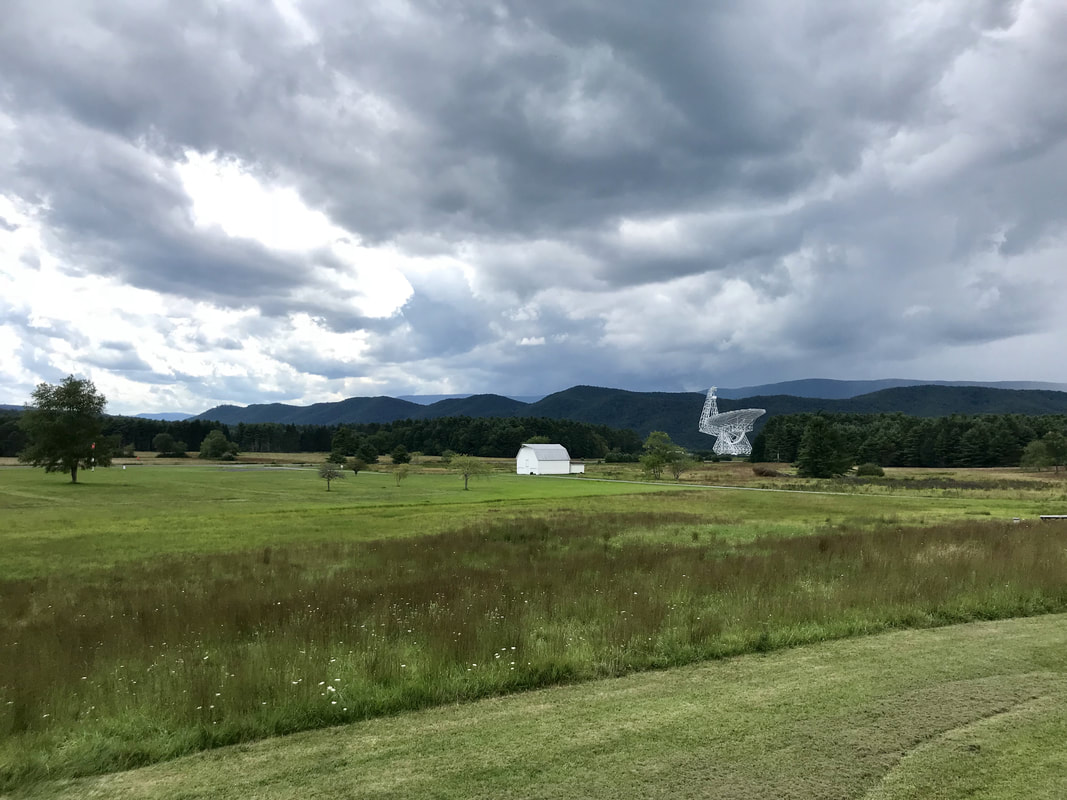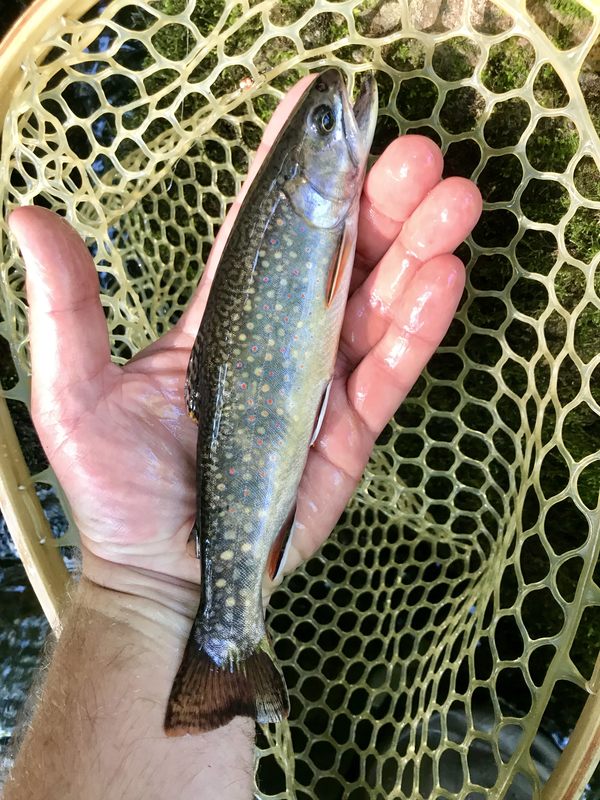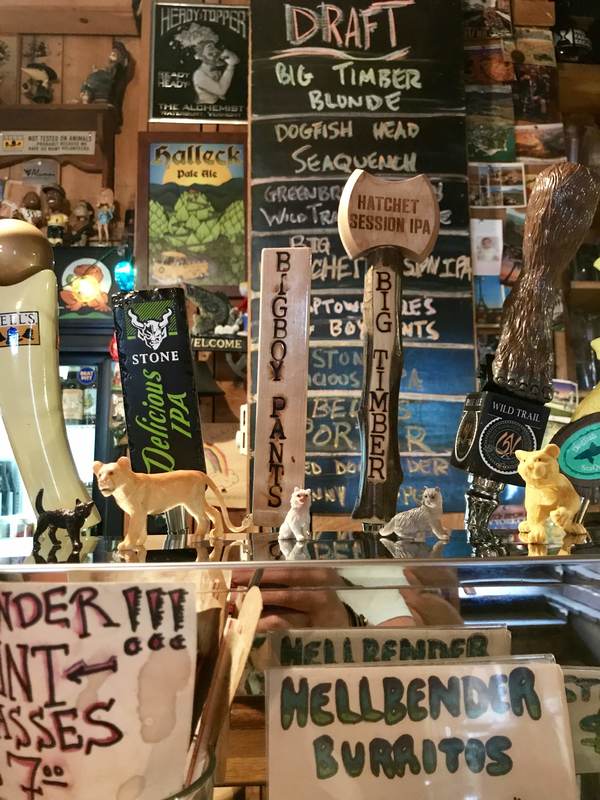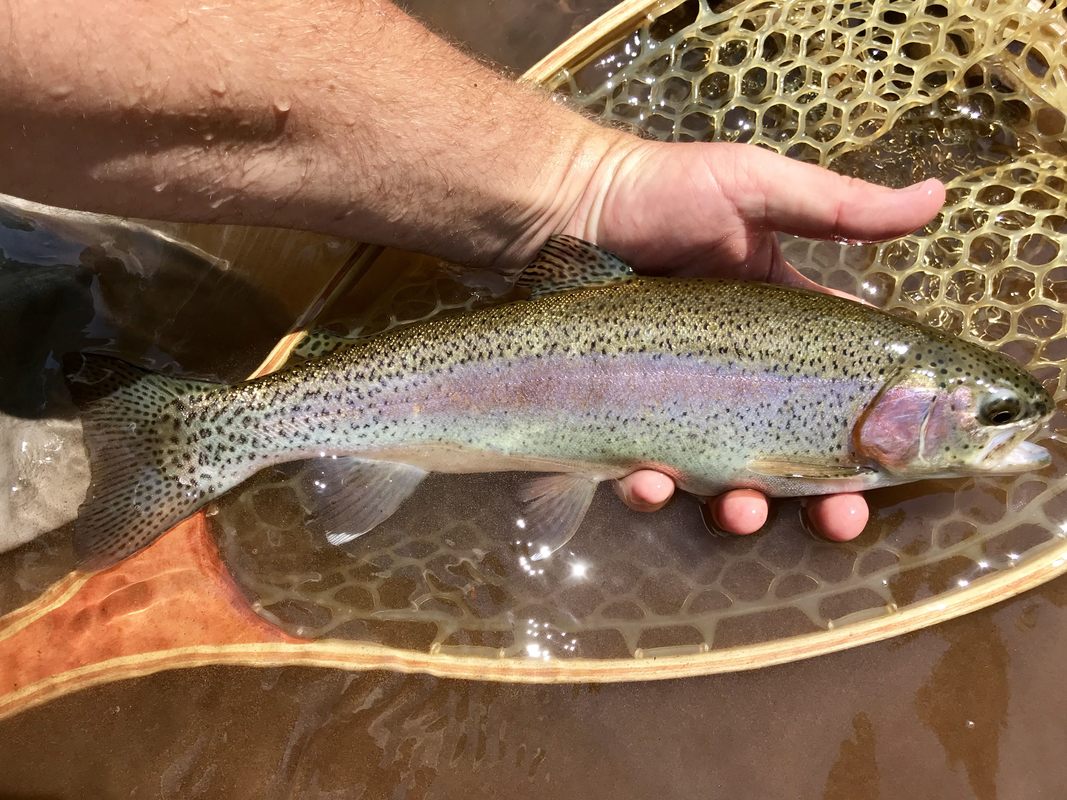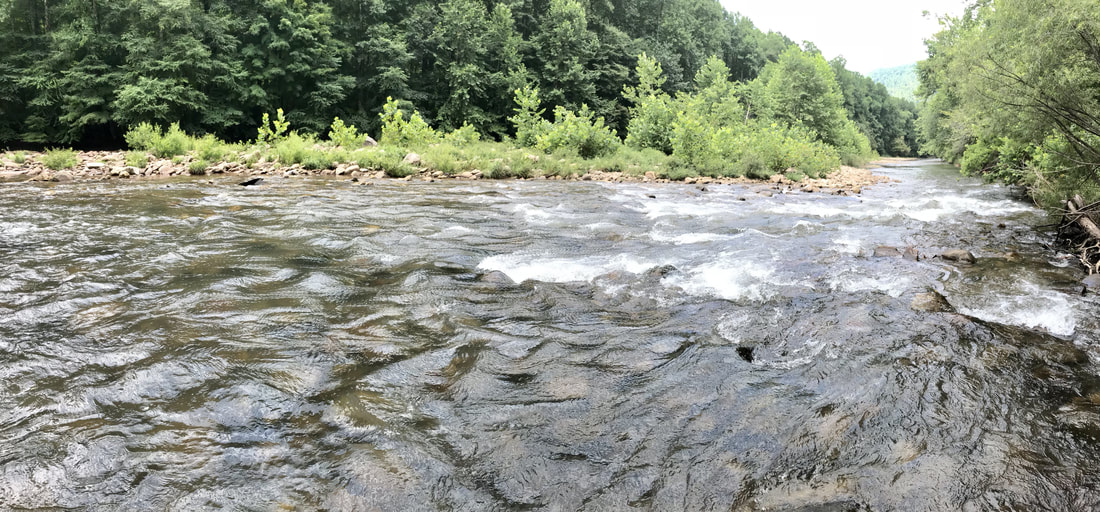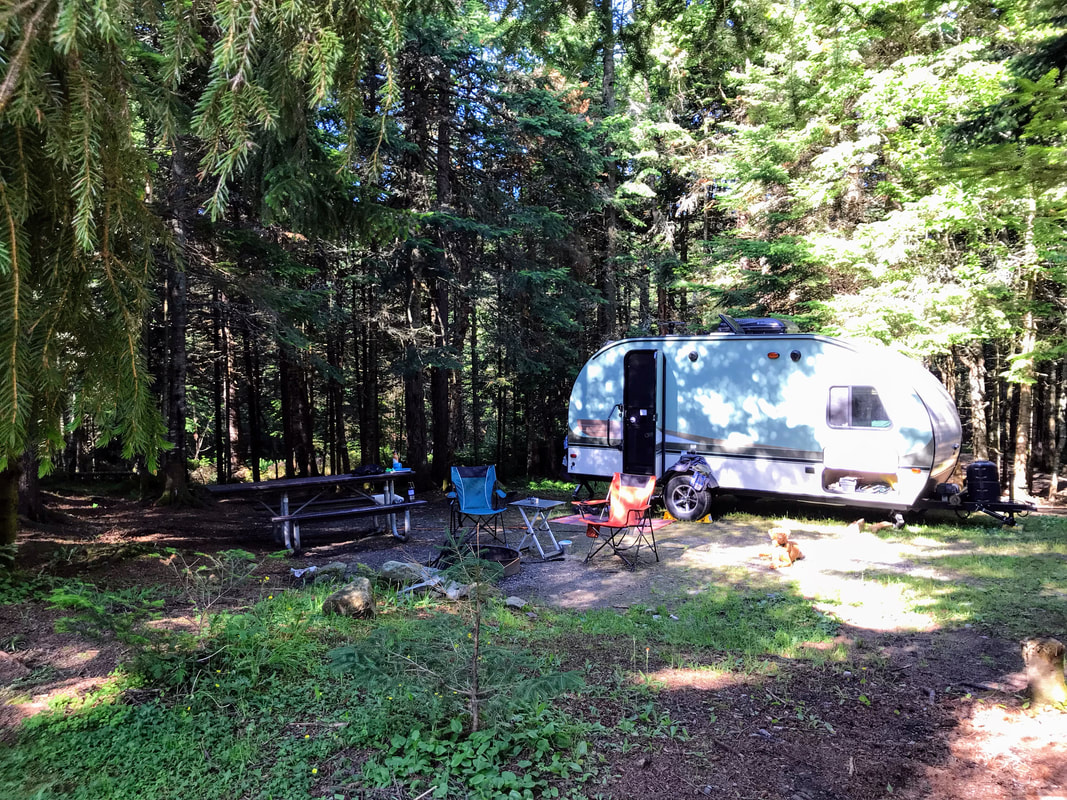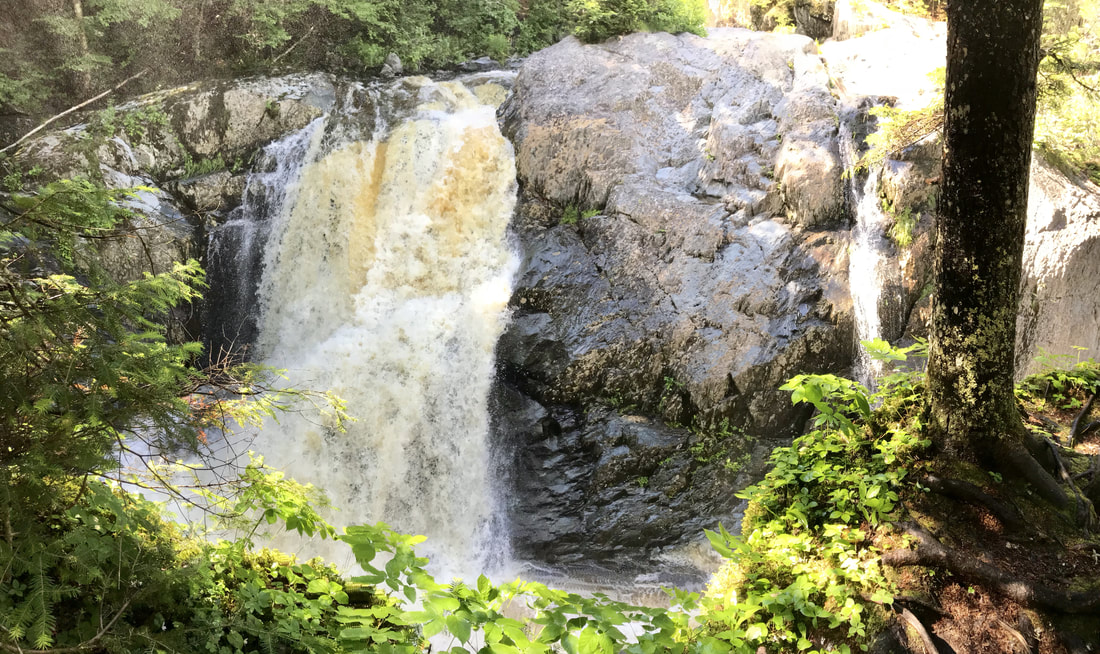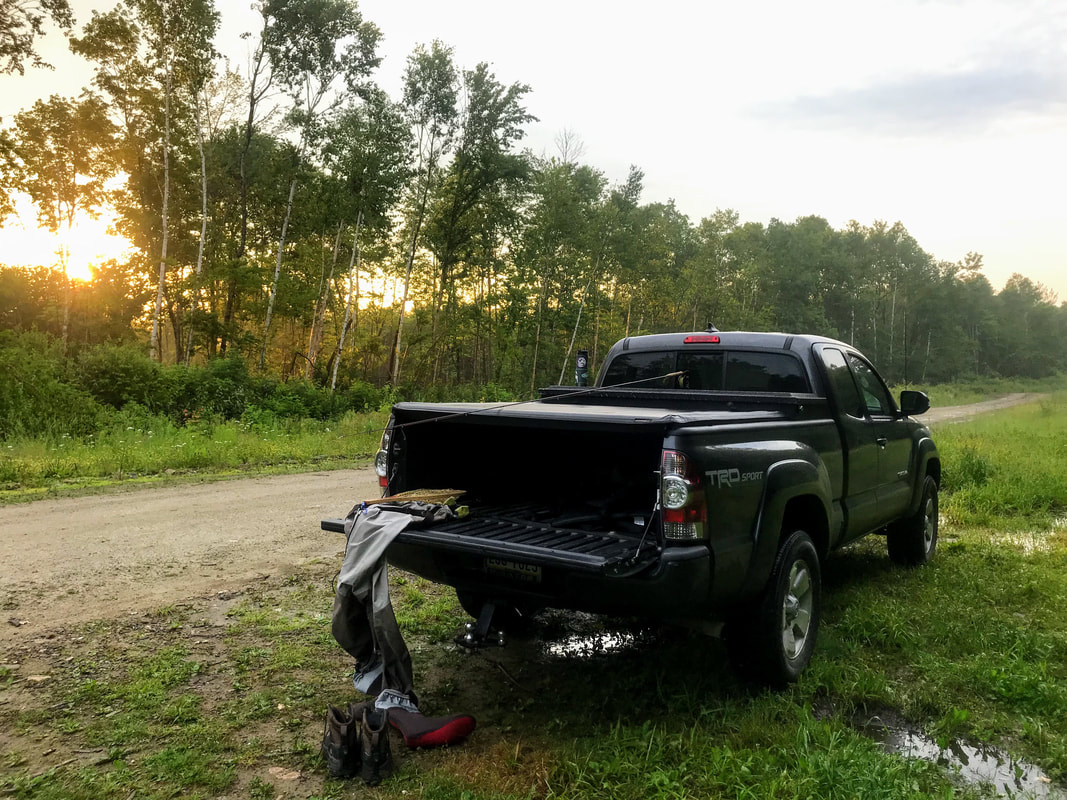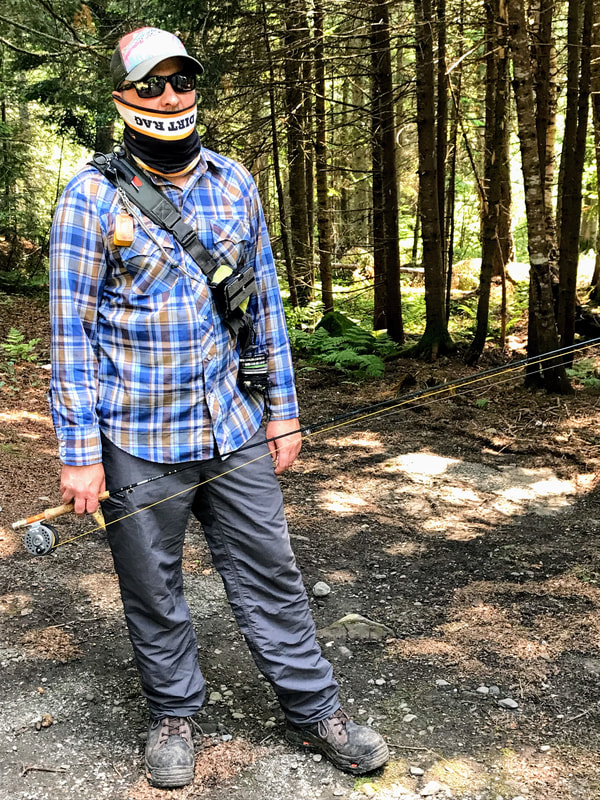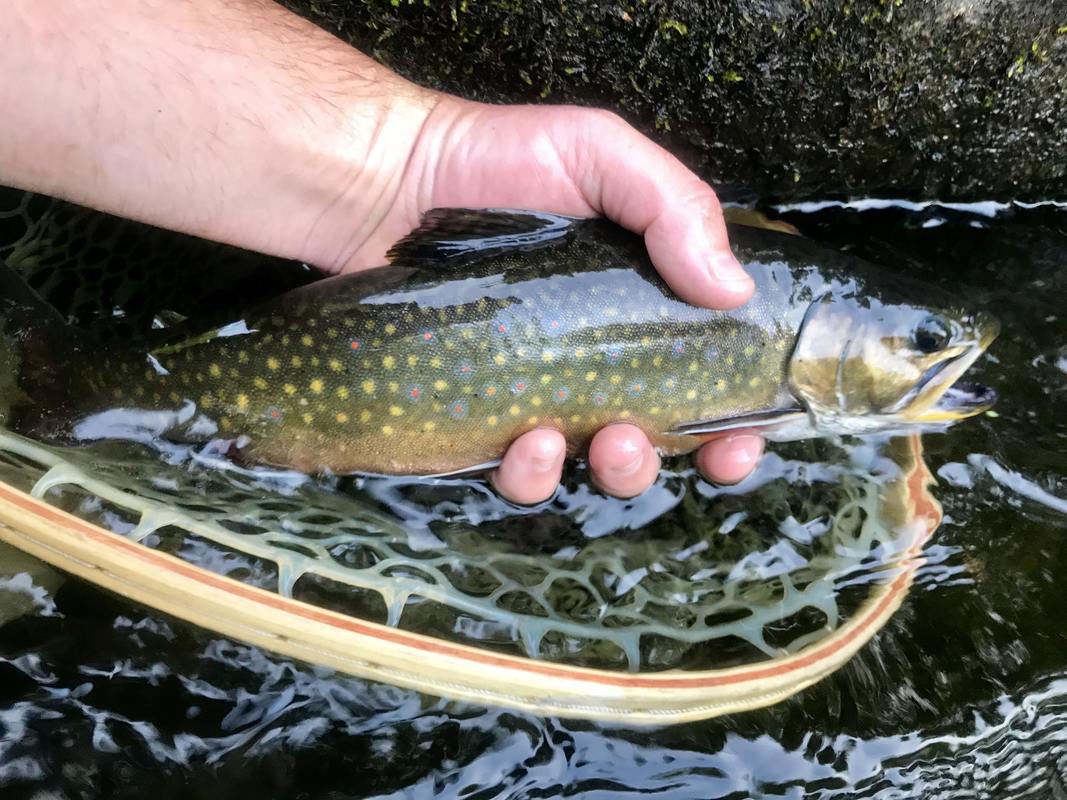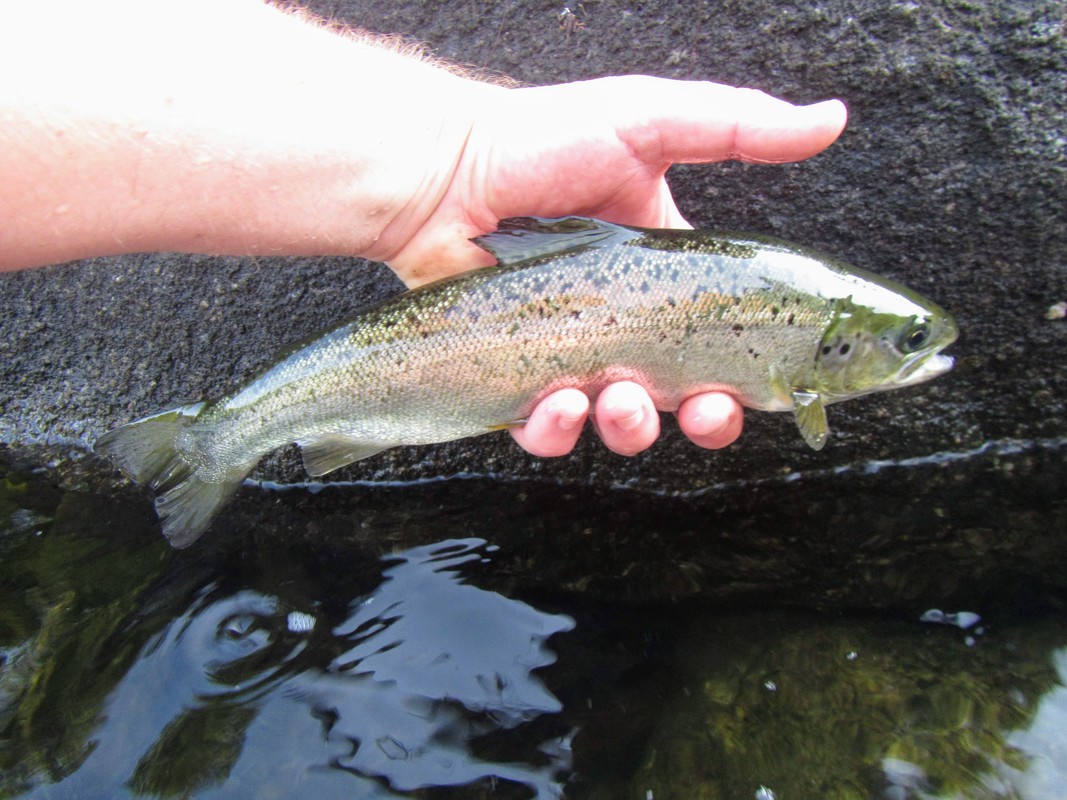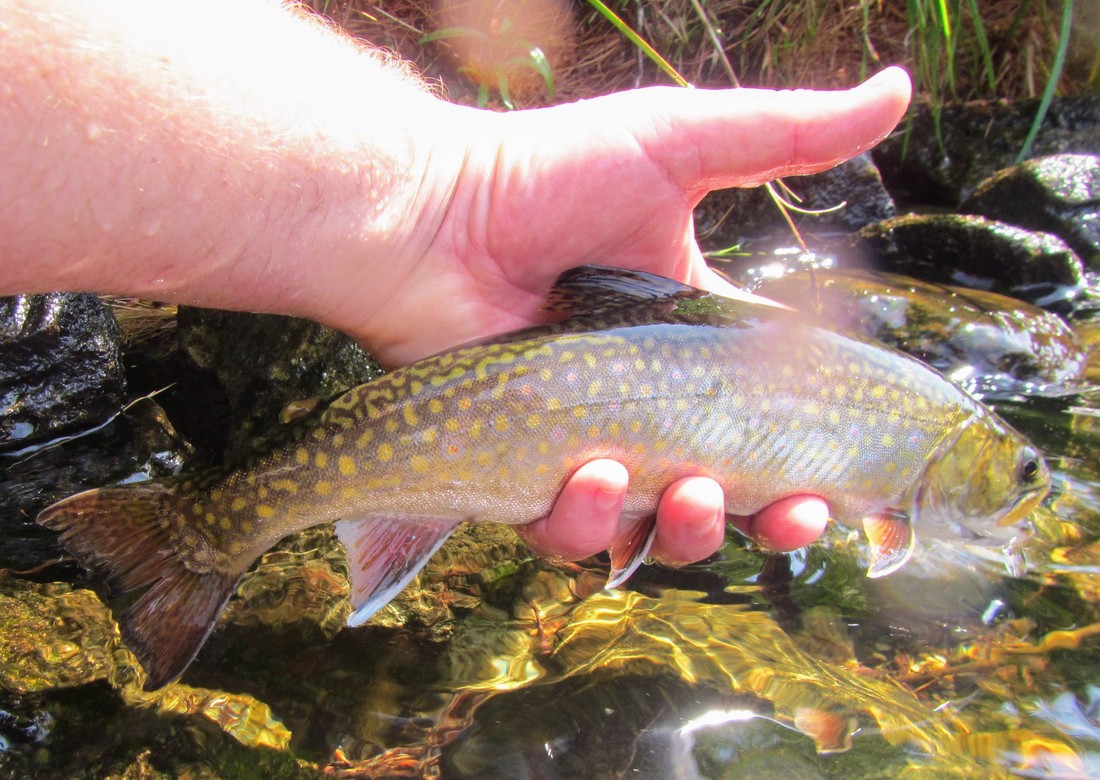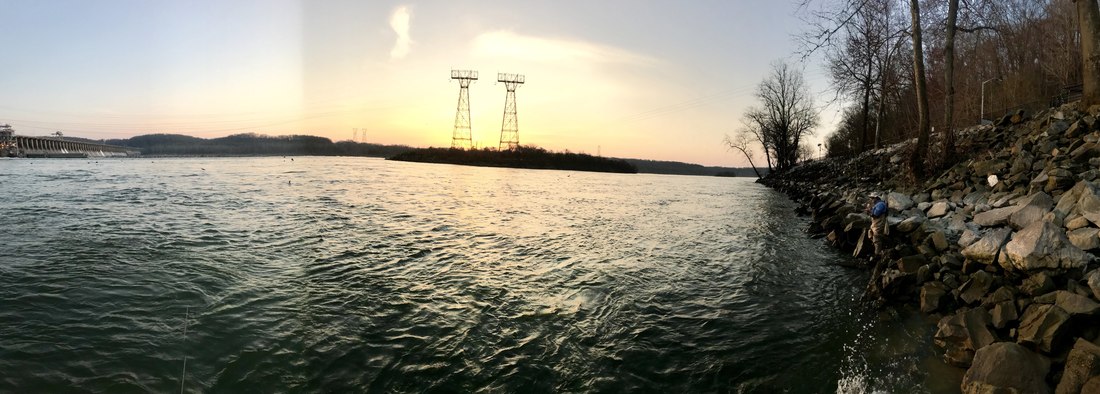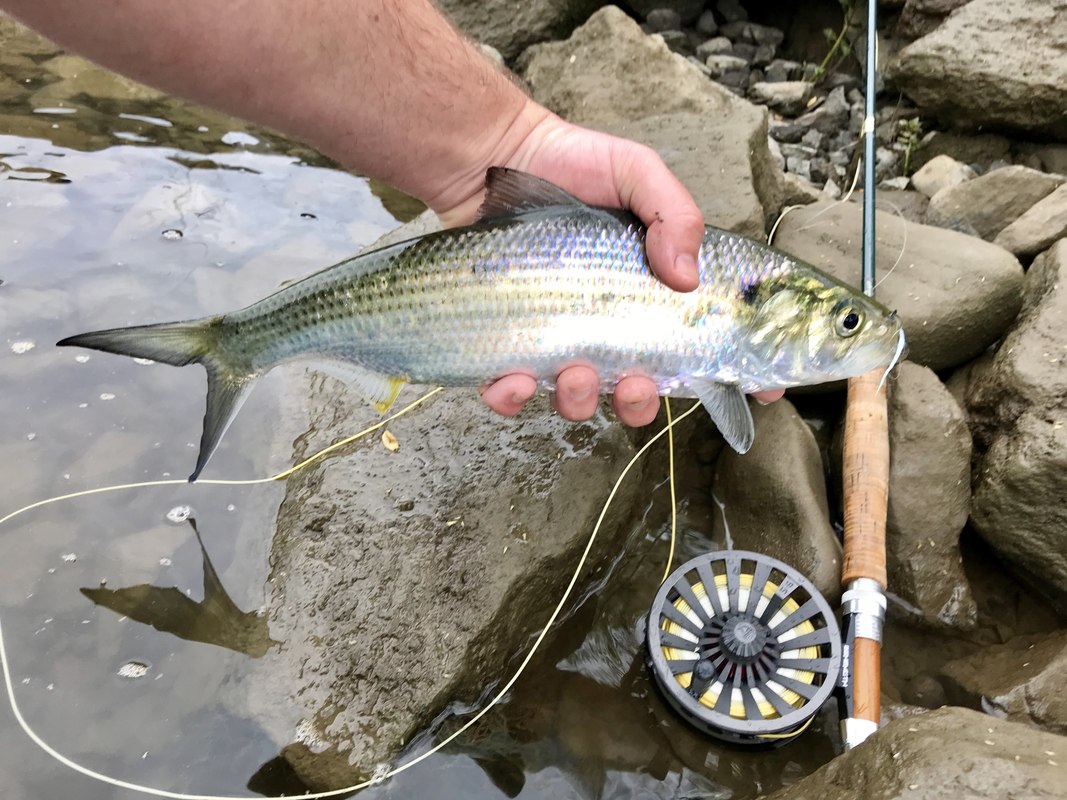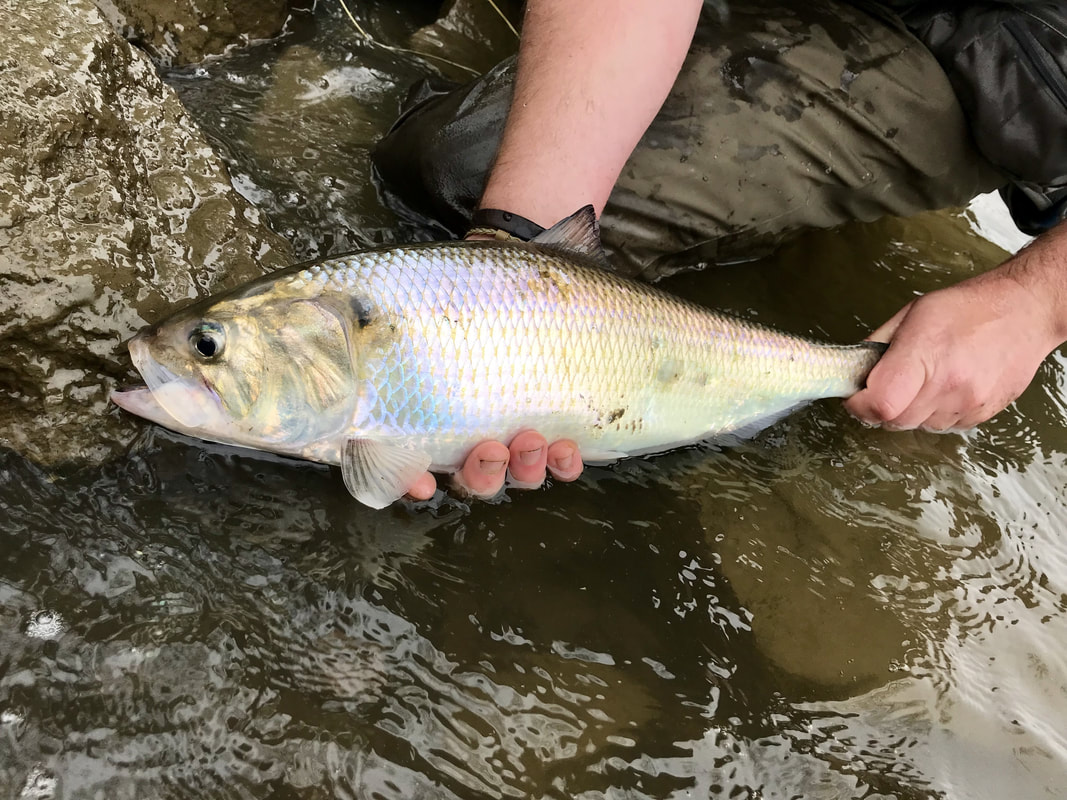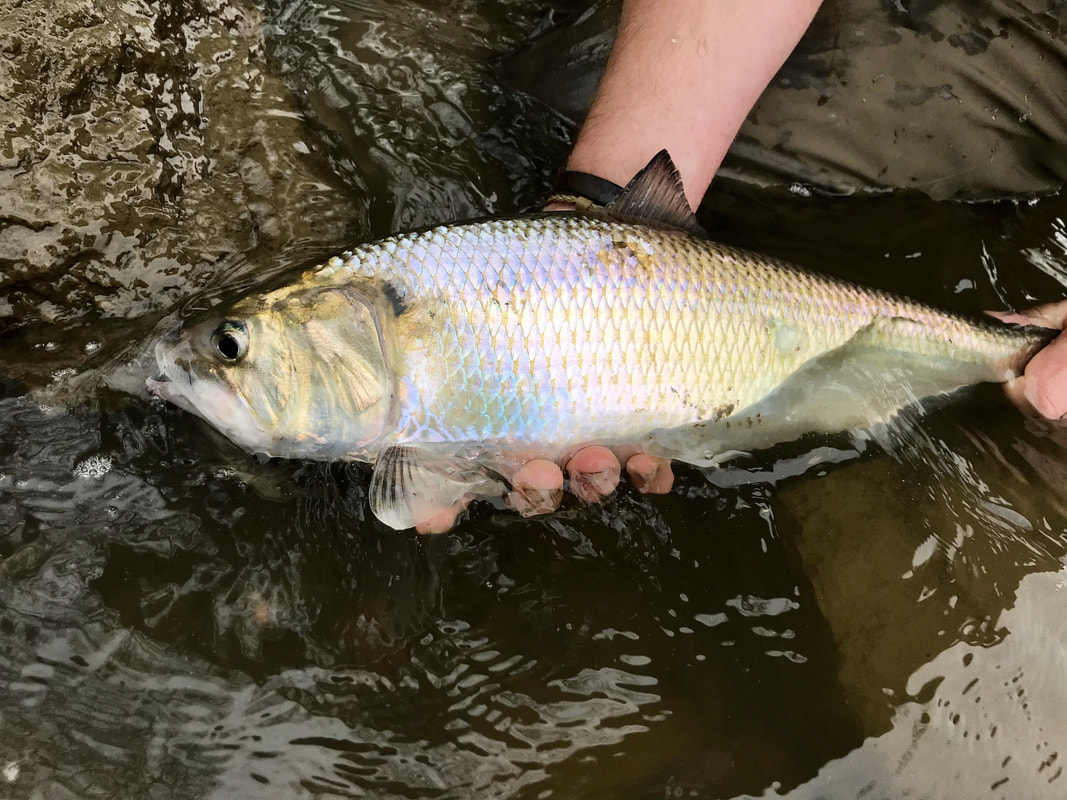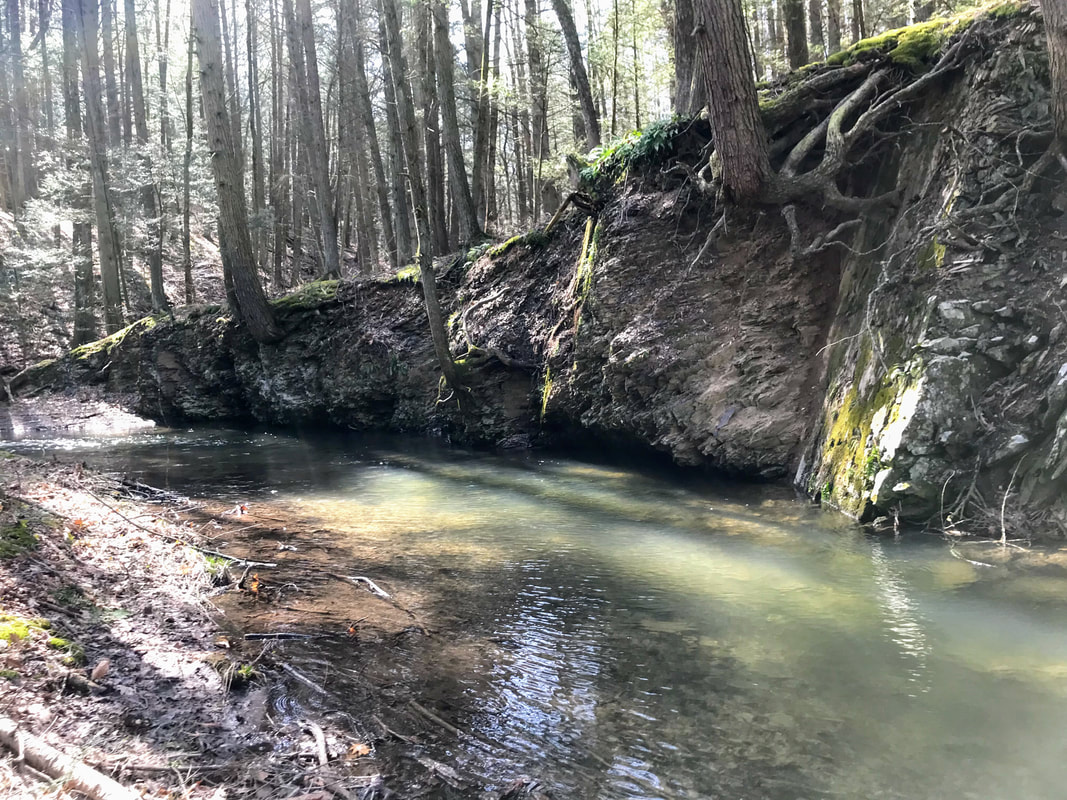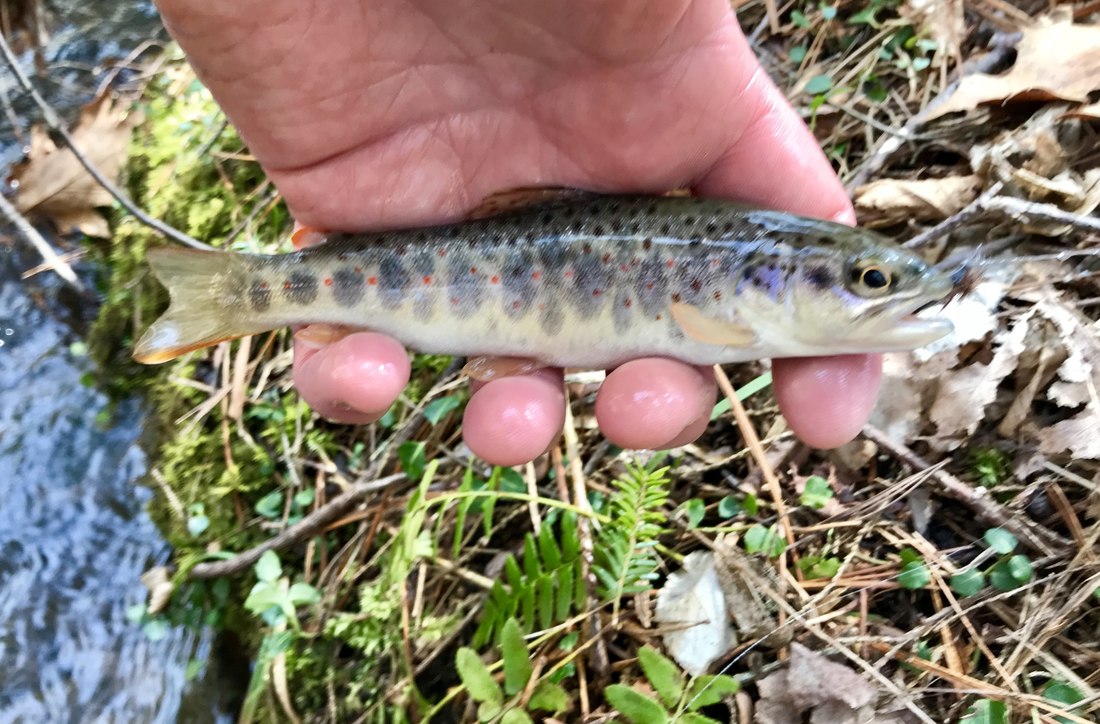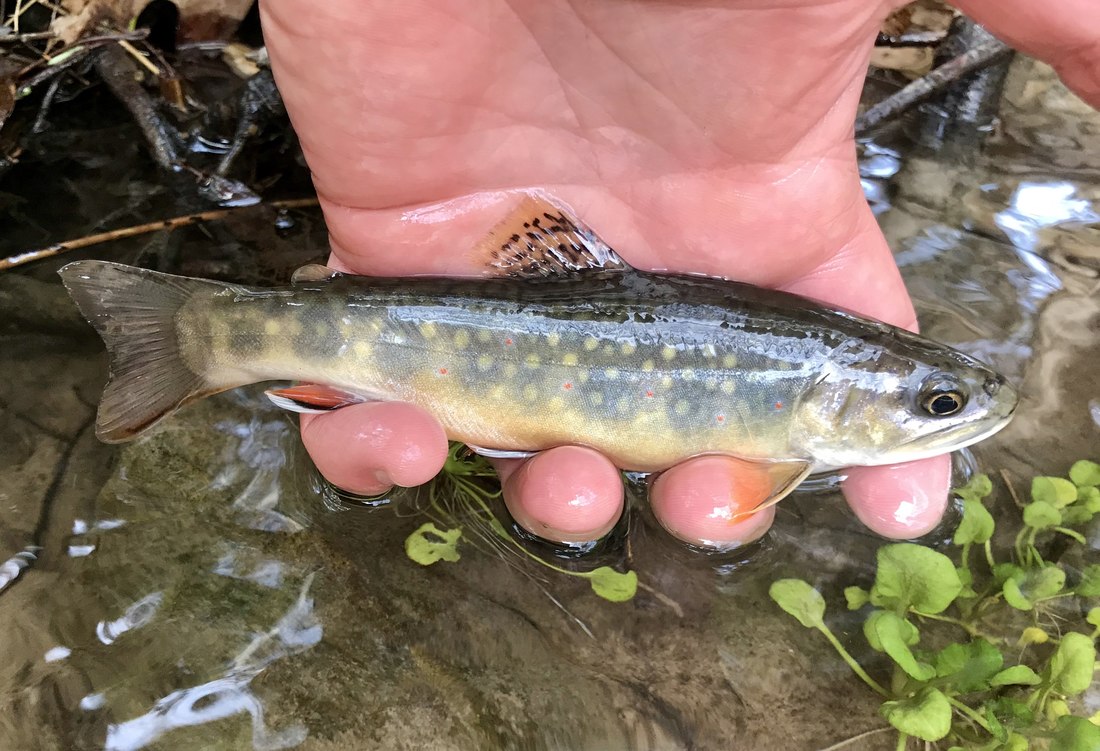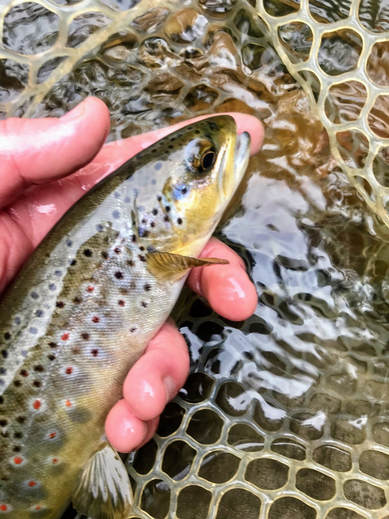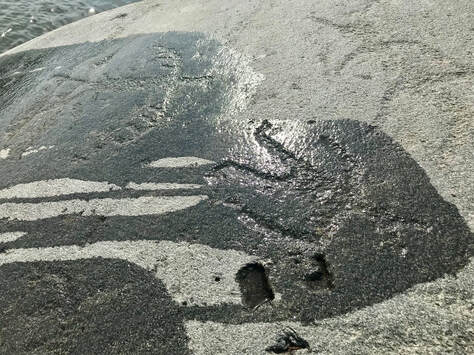 Down in southern Lancaster County, where the river stutters through a few dams, there are a couple of rocks that have petroglyphs carved onto them. These carvings are anywhere from 400-1000 years old. There are Thunderbirds, serpents that mark the four equinoxes, swirls, various animals, human figures, and etchings that mark the Pleiades. It's a pretty incredible experience to pour water over dry rock and have these ancient symbols of language appear. 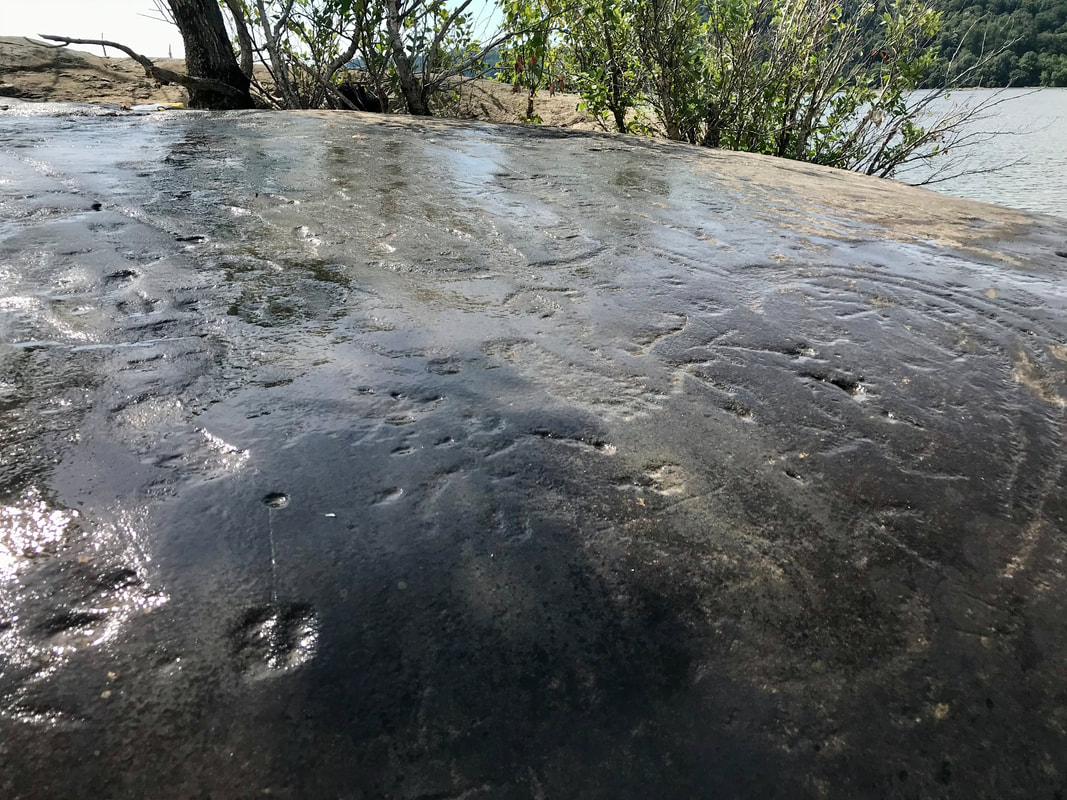
0 Comments
I just got back from ten days of traveling through Yellowstone, the Absaroka-Beartooth Wilderness, and the Big Horns. It was an incredible trip with an old college buddy (the winds of North Dakota nearly swept us up across the border) with too many highlights to discuss. Each place, each alpine lake, each nook below a peak offered some sort of unique beauty that I'll hold till I can't anymore. One day in particular will shape my days for a long time to come. 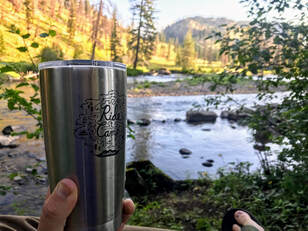 The day before, we woke at 4 a.m. and took the hour drive to be first in line at Slough Creek Campground. Well worth it as we got the best site, right along the river, with a great view. We fished a lot of the big waters in the park - Soda, Lamar, Slough. All were really cool in their own way. But it was the freestone creek that required a long hike into the backcountry that provided us with the best memories and fish. Within about a half mile of the trailhead, the valley keeps opening and Jesus it's beautiful and you forget who you are and why you are there because all you can do is just try to take it all in 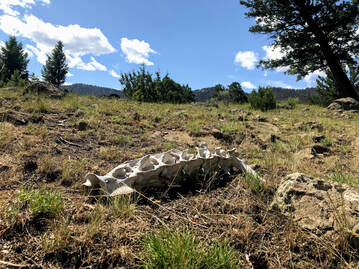 Within a mile, there were no other people on the trail. The more dirt we put under our wading boots, the wilder it became. We both had bear spray and were both convinced we'd run into one. Just the night before, two black bears were rummaging about twenty yards from our tent. We kept coming across scorched bones of bison. Had these bones been washed down in the spring run-off? Had they been taken down by something right where we stood? Yellowstone has such interesting and diverse landscapes. The juxtaposition of seemingly foreign elements is jarringly beautiful. Femuroles next to spring creeks with brook trout, bones next to wild sage, high peaks next to deep ravines. The trail kept descending until, finally, it reached the Yellowstone. It was day 5, we had no showers, and there was this long eddy and beach. What else is there to do but swim for an hour? 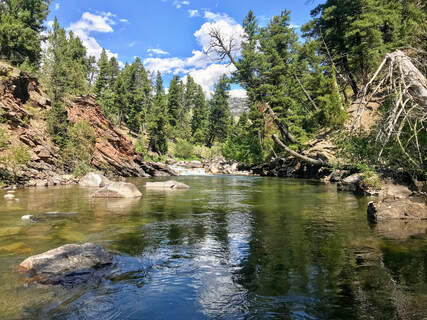 Big salmon flies and stone flies were hatching and fluttering in the air. I had some massive cutthroats nudge my flies, landed a few small ones. It was already mid day so we started to work up the stream we hiked down. Soon, we found this pool. Soon, we couldn't stop catching beautiful Yellowstone Cutthroats on big dry flies. The water was so clear, the cutties so bright, that you could see them streak up from the bottom or from the far banks for these flies. We kept fishing until we got hungry and had a great lunch of peanut butter and bacon sandwiches next to some antler sheds... 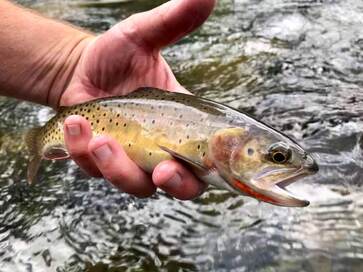 We kept fishing and working our way upstream and catching cutthroats in ever pool and riffle Then regular afternoon storm clouds came through and we decided to make the trek back out. It was exactly the day I covet - backcountry exploring for wild trout in wild places. Yellowstone is pretty awesome... especially if you get off the road and away from the popular spots. "The greatest warriors are those who dangle a human for hours on a string, break sacred water for the profanity of air, then snap fiercely back into pearly molecules that describe fishness" - Joy Harjo Every few years, I find myself returning to the north Maine woods to exist, even just for a few days, in the shadows of Katahdin and the murmur of the Penobscot. It is this mountain and this river that I seem to owe so much to. They have shaped my life's path more than most anything else. I was first taken in by these woods and waters while I was working on the trail crew at Baxter State Park. I didn't do much fishing then; instead, I spent my time relentlessly exploring, expending all that 21-year-old energy into rafting down the class 5 rapids of the Crib Works and reaching every peak I could over our three day weekends after working four-tens building rock staircases up Katahdin and clearing twenty miles of blow-downs in a day. My knees never hurt, my skin grew immune to the hordes of black flies, my eyes were always looking beyond each false peak and around each river bend. I didn't take much time to study what I was rafting or hiking - too much to see up ahead. Now I make a pilgrimage every couple of years not to push myself into deep unknowns, but to revisit certain trails and pools and to find those tiny mysteries that exist right in front of us. And to hopefully land some beautiful landlocked salmon and brook trout. I found myself this year questioning this idea of "revisiting." Has it just become a pattern that I've fallen into that, in some ways, constricts my experience down to a simple reliving instead of living something "new?" Over the week, as I fished my favorite eddies and runs, I realized that a pilgrimage is a different type of "revisiting." It isn't a reliving, it's a going-back-to-in-order-to-find-something-new. The salmon here in this water revisit it every year as they spawn, yet they are experiencing something completely new. Some may pool up in the same eddy every year, but they are reaching for different caddis during those last nights of June when they flood the air. I may fish this same run I did last year, but when I look up, the clouds clipping across Katahdin have a notion I've never seen before and the salmon that just attacked my emerger takes me for a ride downstream that I'll never forget, his last jump over my head a fine farewell until I come back. A pilgrimage is about honoring the steps already taken while also experiencing and discovering something new.
A day after school let out, I found myself rambling up hollows of Potter County. It is here, where rock tightens its grip to water, that everything grows more full. Color, life, sound, smell, the way deadwood lays across rock - patterns stitched by the quick wind that slices down these drafts. Patterns of the elders It is a good way to start the summer - sitting on the tailgate with mountains in the windows, looking at maps, tracing hyphenated courses and blue lines, waiting for the sulfurs to hatch. One night, after we caught brook trout on little bright yellow flies, I made burritos. We sat around the fire and ate them. The thin moon showed us the movement of night. The next morning we sat on the porch and drank coffee for a few hours, watching the valley and the clouds slowly shake by. During the day we bushwhacked through thick brush and found plunge pools. The long thin red marks across my shins, those are good scars, tattoos of exploring.
One of the many great answers -
"The Key That No One Has Lost" Poetry serves no purpose, I am told and trees caress one another in the forest with blue roots and twigs ruffling to the wind, greeting with birds the Southern Cross Poetry is the deep murmur of the murdered the rumors of leaves in the fall, the sorrow for the boy who preserves the tongue but has lost the soul Poetry, poetry, is a gesture, a landscape, your eyes and my eyes, girl; ears, heart the same music. And I say no more, because no one will find the key that no one has lost And poetry is the chant of my ancestors a winter day that burns and withers this melancholy so personal." - Elicura Chihuailaf Found in the great anthology Barbaric Vast & Wild 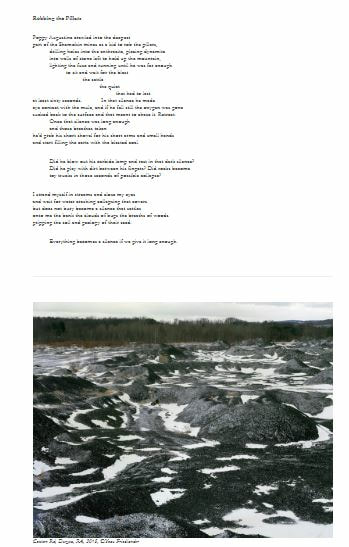 I've had the honor of having poems published by two really great journals over the past month- Hawk & Handsaw Journal of Creative Sustainability and Sky Island Journal. Four poems, all centered on the relationship between humans, nature, industry, and water were published alongside some really great photographs at Hawk & Handsaw Journal of Creative Sustainability. I love how the photographs work alongside the poems. They do a fantastic job at capturing the rough beauty of Pennsylvania's mining country. "Life-Cage" was published in Sky Island Journal. I've been reading a lot of Robinson Jeffers over the past few months. I think he has influence my work more than any other poet. I wrote "Life-Cage" after finding the phrase in his poem, "Theory of Truth." His stanza- "Because only / tormented persons want truth. / Man is an animal like other animals, wants food and success and women, / not truth. Only if the mind / Tortured by some interior tension has despaired of happiness: then it hates /its life-cage and seeks further...". 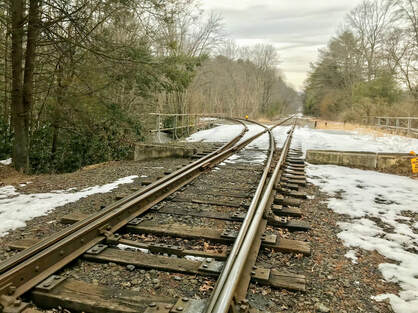 Inevitably, I find myself walking the tracks back home, humming some Charlie Parr song about rivers and cedar. I tend to be drawn towards rivers that run parallel to rail lines. It is here, in these crevasses that wildness and industry collide and, hopefully, coexist, that I find so much beauty. Oftentimes we think of nature and wildness as some idyllic, far-away "thing" or "place" when it's really right in front of us. If we aren't able to find the wildness in the spaces where we live, we'll never truly be able to appreciate any sort of wildness. 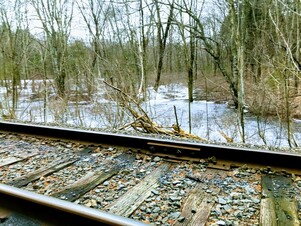 Maybe it's because I fall asleep every night to the calls of trains running the Susquehanna River a few hundred yards through the woods. Maybe it's my early love of Stand By Me and the journey of walking the rails and that boyhood bond that shapes life. Maybe it's the music I obsessively listen to that connects me to place and time- Dylan, Parr, Jerry, Sun Ra, Alice Coltrane, Gunn. But there is it, frozen backwater full of sycamore and young maple that holds my attention, that buries itself in the palm of my hand like a pebble I rub with my thumb. 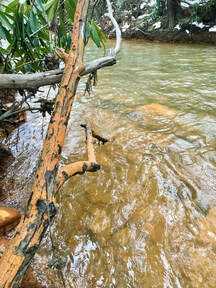 The skulking creek branches towards sunrise with orange creamsicle stained rock, covered in the spittle of mine spill striking through the Appalachian mountains that have folded into ridges and valleys, Worn thin from the erosion of age. There's beauty in its coarse recovery into a watershed that holds thriving wild brown trout. This stream was killed, years ago, by acid mine drainage. Now, thanks to remediation, brown trout have found a niche among stained rock and rhododendron. It's a wildness of recovery, of the melding of steel and water.
We decided to take a long weekend up in the Finger Lakes since work has been pretty consuming for both of us over the past few months. It was time to disengage from the routines of home life, to shake off a bit of the dust from all the sawing and shaping we've been doing. We left early Saturday morning and took a straight shot up 11/15 into New York. We got to camp around 1 and by the time we were set up, a torrential rain came through. We stayed dry in the camper - this seems to be a "thing" that happens to us - getting to camp right before a rain sets in (Rock Creek in Montana, Big Eddy in Maine...). It's good, though. It forces us to settle into a place.  After the rain tapered off a bit we went for a hike up a ravine and found some waterfalls. It rained again on our way back, but we stayed dry under a thick canopy of fir and pine. By dusk, the rain turned into sleet. Temps dropped. No chance for a fire, so we ate dinner and hung out in a warm camper. A pretty great Saturday night. There was frost the next morning. We had one of our camping staples for breakfast - Heuvos rancheros. Insanely great, one of the best foods to start the day. 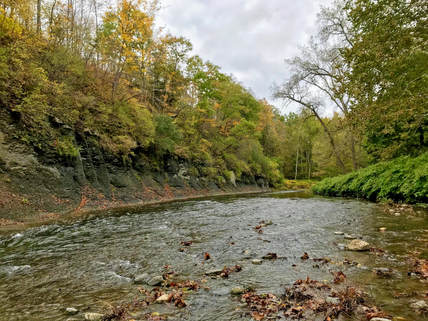 The sleet and snow finally stopped around lunch, so I decided to sneak out for a few hours to explore some water. I found a blue line on a map - a tributary to the lake - and decided to take a look. It had a cool name and it looked like a decent place to possibly find lake run brown trout and landlocked salmon. I found a public parking spot near the mouth - no cars. Possibly a great sign, possibly a sign that the run hadn't started yet. I hadn't be able to find any information online about fishing conditions which I kind of loved. The locals here don't advertise their water. I respect that. I worked my way upstream, hitting the deeper runs. I was hoping for more water in the stream, but there were still some deep troughs that looked like great holding water. I didn't see any fish until I moved a really big lake run brown trout on a black woolly bugger. He sniffed at it, then turned away. I reached a really long, deep pool with a maple tree that had fallen in about halfway through. It was there, under those branches, that laid the darkest water. I drifted an egg through it once, twice, three times. On that last drift my line went tight and my Winston 6 weight bent down in praise of some holy idol lurking deep in the bottom of the pool. It knelt like that for a solid ten minutes as I fought this fish. At first I thought it was a sturgeon as it stayed hovered along the bottom. It fought like a catfish as it kept trying to get lower and lower in the water. I couldn't coax it up at all. The only other landlockeds I've landed were in Maine and they'd leap out of the water every chance they got. This one was different. She wanted to stay low. It ran upstream a bit, then settled back down in its original spot. Finally, she started making runs downstream. With each run I tried to nose her down into the shallow part of the pool. On the fourth run, I finally got her to oblige as I literally ran downstream with her. I netted her with my little trout net and luckily a dude showed up right then who had a bigger net. I slid her over to it and removed the egg pattern and the big black conehead bugger that she had ripped off someone else's line. He took a few quick pictures and she swam away. This is by far one of the best wild fish I've ever landed. The entire experience was the culmination of a on a ton of hours put on the water and on exploring. There's nothing quite like finding water and wild fish on your own.
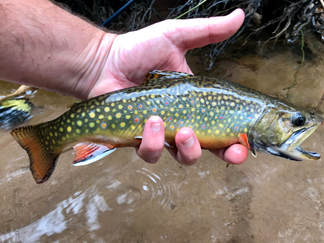 "I know no good way to live and I can't stop getting lost in my thoughts, my ancient forests... You ask - how does a man rise or fall in this life? The fisherman's song flows deep under the river." - Wang Wei 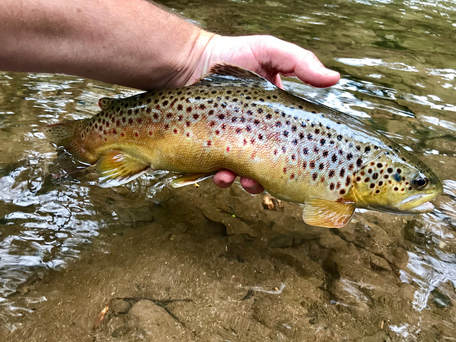 I work my way downstream stripping a black woolly bugger through riffles and pools. Leaves release from their branches. Water swirls cold. Clouds pile onto each other. Trout chase flash through pebble and sand. Sediment settles in the first low water of the season. I have nowhere to be except to make pizza for dinner in a few hours.  "Ask me how it is I've come to perch in these blue-green hills, and I'll smile with no answer; I'm happiest with heart-and-mind just so, may be... Peach blossoms float by here, gone into the quite definite shadows. There is another world, other than this one we choose to live in." - Li Po I have a new poem, "Dead Bodies of the Susquehanna," in the latest issue of The Wayfarer. You can order your copy here - The Wayfarer, Autumn/Winter 2018
Thanks for reading! 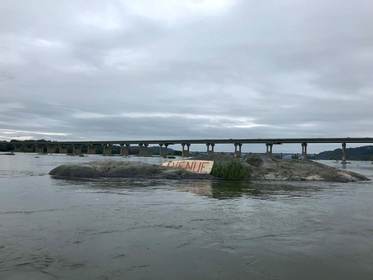 Here's the tell - I still get swarmed by mosquitoes when I sit out on my porch at night. It's September. It's been raining since the end of July. There have only been a few days without rain, even fewer with dry air. It feels as if this area is slowly turning into a tropical floodplain. The Susquehanna has stayed high all summer. No zostera. No hyacinths. Only a handful of bass brought to hand. Wading has been difficult, so I've been floating it with the kayak. Each time there are different eddies and currents. The river changes with every flood. It's bulging. The canopy and water are growing closer. 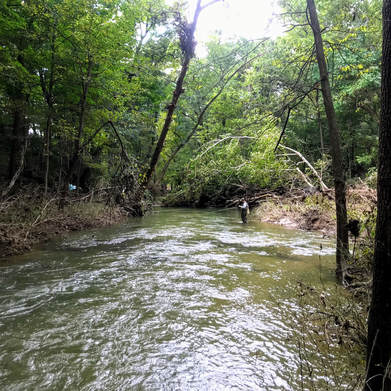 The one upside to all this rain is that, once the sediment settles, the trout streams around here are fishing well. There's a spring creek a few minutes from my house that normally runs pretty low by this time of year. Developments keep being built and the water table gets sucked dry. I fished it for a few hours this evening and was pleasantly surprised at how high the water was. The recent floods have pushed a ton of sediment downstream, leaving some nice, long deep channels. The water was that perfect chalky limestone color. The trout chased the woolly bugger with abandon. There's a stretch I love to fish that is lined with quite a few old Osage Orange trees. They aren't too common around this area, especially this size. Their bark is unique - strained, thick, topographic, deep grooves that wind their way up and down the tree. Their canopies are large and filter the light in this shallow ravine. They seemed to survive the last few floods. Still standing. Whereas some gigantic sycamore have fallen. They line the banks and as the dirt is dragged downstream, their cedar red roots create great notches to stand in to cast. These, along with the catalpa that line the river by my house, are my favorite stretches of trees in the county. In the fall when I walk this stretch I'll find dozens of their burled lime-green hedge apples.
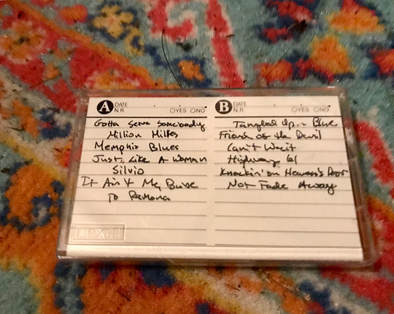 The opening of the Vegas House of Blues, 1999. Two couplets anchor this show. The opening "Gotta Serve Somebody" into "Million Miles" and "Friend of the Devil" into "Can't Wait" This was back when Dylan opened every show with Serve Somebody. Started electric, followed by a set of acoustic, then back to electric for the encore. Bono, he comes out for "Knockin on Heavens Door" and it's not the lyrics of his added verse but the guitars playing behind him that make the song standout. This band knew how to play off each other. Bucky Baxter slides out an incredible peddle steel solo in "Friend of the Devil" and Dylan knows exactly how to draw out "babe." He drags right through every note - cigar smoke and foggy glass. That song was written for him to sing. Like a duet with Jerry, Dylan and the pedal steel carry this song into the second electric set. "Can't Wait," a slow tumble between Larry and Bob that Bucky sways back into the track with his pedal. For me, it always comes back to "Million Miles" and Tony's bass line. It's a highlight off of Time Out of Mind - an incredibly deep blues riff that carries the whole record. The blues they hone in on during the opening two numbers threads the entire set together. Some want Dylan to be "political" again. To voice something that they think needs to be voiced about the world. An artist does not voice what people want. Want a protest song? Go back and listen to "Gotta Serve Somebody" from August 6th in Singapore. He's been playing it again, with different stanzas. Want a message? Go listen to it and what he sings about Vegas nearly ten years after this show in Sin City. That's the message, that we're too afraid to ask for, we need to hear. The heat of the summer was getting too much. Coupled with the continuous rain, I was feeling cooped up with the river blown out. No bass fishing. No kayaking. Every bike ride ending in a rainstorm. I woke up last Sunday knowing I had to leave for a few days, shed some of this summer skin. I decided to head down to West Virginia to check out some water. I camped near Seneca Rocks and took a few days to roam around the Monongahela National Forest. It's beautiful rugged country. Steep wooded hills flooded with rhododendron.I got into some wild rainbows, which was super cool. I met an old lady whose job it was to park at an intersection of two gravel roads six miles deep in the forest just to tell people not to turn left. Pipeline Construction. She warned me about the rattlesnakes. I kept an eye out for them the entire day. We talked about the storm coming over from Elkins. I came across the Green Bank Observatory. A surreal place tucked deep in West Virginia. They listen to the universe there. Afterwards, I caught brook trout in the middle of a thunderstorm on big dry flies. This is the summer of rain. I drove down countless ravines. I drove up miles of mountain. It was a good week. I ended it in western Maryland after stopping for some of the best burritos I've ever had at Hellbenders in Davis, WV. I caught brook trout. I had a fire. I fell asleep to the stream, the throaty call of the frogs, and the sharp gossip of crickets. It's been a good summer.
I rest easy when I'm in the north woods. The deepness of the green and the water and the night are a comfort for me. We spent the last week camping in northern New Hampshire and western Maine. I spent a lot of time exploring water - the Rapid River, the Magalloway, the Upper Connecticut. Many wild fish were caught, some big ones lost. A thunderstorm came in over two hours one night. We sat by the fire and listened as it worked its way south out of Canada and finally fell asleep as torrential rain rolled its fingers across the roof of our camper. It was a good, hard sleep that night. The humidity hit later in the week, slowing us a down a bit. Another storm came early Friday morning - 4 a.m. - and pushed in a cold front. The breeze stuck with us for a few days. We woke up late, ate a hearty breakfast at the local diner, hiked Magalloway Mountain, and in the evening caught landlocked salmon, brook trout, brown trout, and rainbow trout on a high floating caddis.
"Yeah, it's pretty good. I've got about 15 and I've been here since 6." I was laying in bed listening to the owl when I got the text. 6:20. I promised myself one morning this week of not waking up to an alarm but woke up early anyway. Pushing the skunking I took last time I tried for shad out of my mind, I roll out of bed, throw on some clothes, and head out towards the Conowingo Dam. Google Maps said it'd take an hour and three minutes, I get there in 50. I usually use my 8 wt. for the river, but I've been taking out my Winston 6 wt. I inherited from my neighbor as of late. It's a fantastically responsive rod and fishing it feels like fishing. Sometimes, with my 8 wt., I feel like I'm just chucking heavy hooks full of feathers through the air and muscling fish back in. It's great for my kayak, but this season, when I'm wading warm waters, I'm taking the Winston. Rob gave me a flashy little fly with a pink bead head to use and on my second cast, I finally land my first Hickory Shad. Using a sinking leader helped get the fly down to where the shad where. Sling it out, let it drift down the current and swing it. Slow strips - strip, strip, pause, set. This is how it went for the first few hours. 15 minutes of catching shad on every other cast, then, a lull. But you keep casting, because you don't know when that next bite will start again. They released water late in the morning. Sirens sound, red lights flash and within minutes my boots are sunk and water is up to my knees. I put on a few split shot to get down. Roll cast out, let it swing, and with the first strip my line stopped. Caught on a rock. No, it's moving, but it's not like any other shad I caught that day. It stays low like a catfish and doesn't shoot straight upstream but out and back and then takes me on the reel as it breaks downstream back towards the bay. I slide my rod down, side pressure and turn it, slowly working it back towards me. Finally, a flicker of light in the murky water. An American Shad. 3 pounds? I've never seen scales so iridescent, flushed purple and blue by thousands of miles of salt water hitting the freshwater of the Susquehanna. It's beautiful. Heavy with muscle, a forked tail of a rudder, enough to finish out its journey.
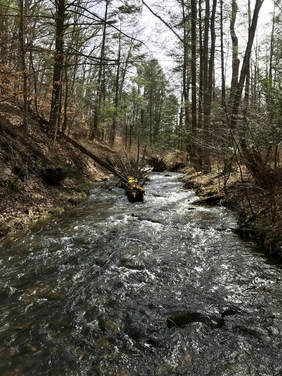 Yesterday I drove up switchbacks through the Tuscarora Mountains - these that create a a few fertile valleys in central Pennsylvania- to a small stream with native brook trout and wild brown trout. Most people wouldn't consider driving this far just to fish a small stream. Destinations are different for those of us who like to spend their days in large swaths of public forests on water with wild trout and no people. It was still cold in the morning, April has been a long March, and a black woolly bugger jigged through the deep pools worked until noon. The sun stretched itself out over the valley by early afternoon. Bugs - caddis, midges, a few black stoneflies - little puffs of bug smoke in the warm spots. There was a pool that, with every cast of my caddis, a trout would strike it. This, that little ten foot pool and those hungry fish, is always worth the drive. 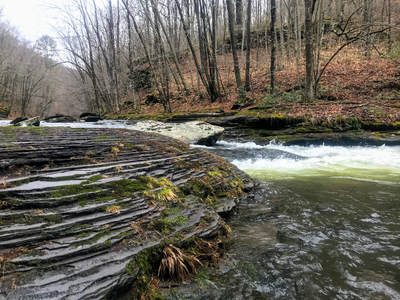 I love driving down dirt rods. The ones that go through public lands and arch their way around mountains and into ravines. That follow streams up into their headwaters. The road splits when a tributary enters, where the mountains fold into each other and you have a choice. Right, Left. I'll pull off when there's space and search the water for wild trout. I fill my days with their dirt and their mysterious bends as much as possible. That plunge pool is at least fifteen feet deep. I was hoping to see some brown trout rising, but the water this far north is still cold, still in its early spring mode. No bugs to be seen, still ice in the north side hollows. This bend mirrored the roads I drove around this weekend. Long slices of rock curving, cutting deep into the dirt, hiding dark runs still waking up from winter.
The lines of thinking I latched onto this week:
Rolled hay. I ended up research the planting, growing, and harvesting process of hay. All because every day on my way to and from work, I drive past a few fields with large rolls of hay held together by twine. They have been left there to age, much like split wood, over the winter. Now, with the recent rains, they are soaked and beginning to sag. Bloated river. The river has been up over its bank all week. The highest all winter. Dark, quick, splotched with migrating buffleheads and Canadian geese. It dropped for a day, or two. But now is rising once again. A quick crest, dip and now another climb up the floodplain. Birds. The woods have been quiet and they sky sparse. Within the last few days with a few days pushing into the 60's, the sky is beginning to fill with birds, the woods have a brighter voice. |
|

www.mgarrigan.com by Michael Garrigan is licensed under a Creative Commons Attribution-NonCommercial-NoDerivatives 4.0 International License.
